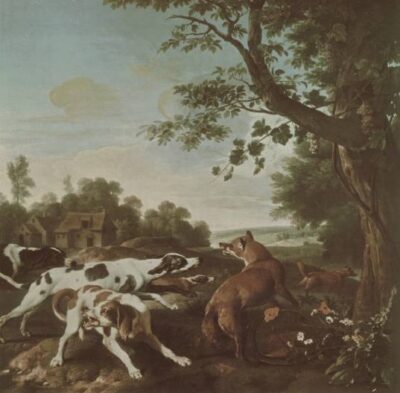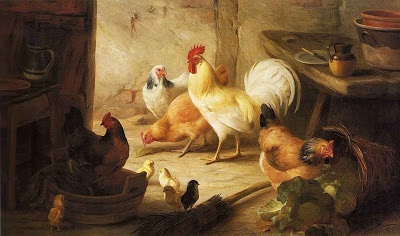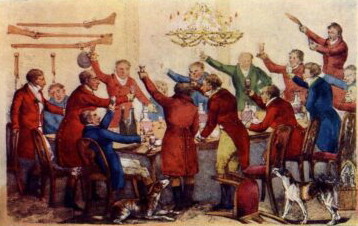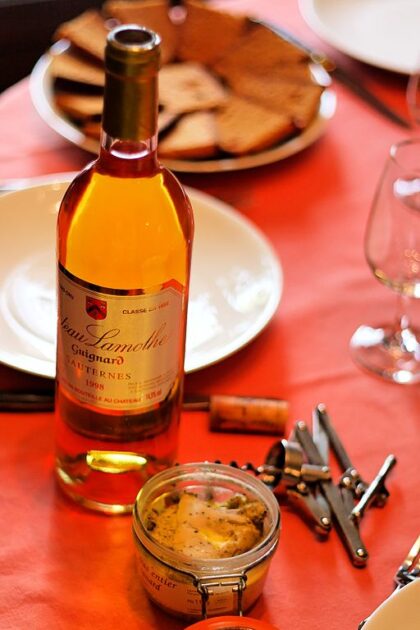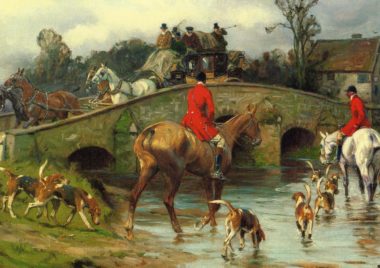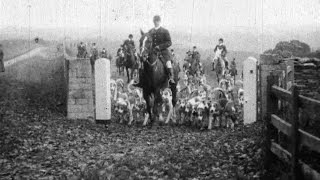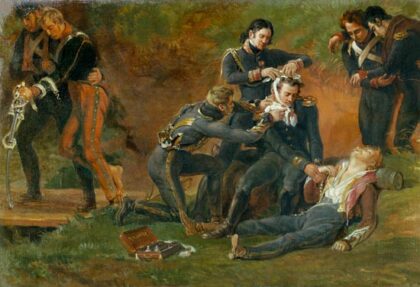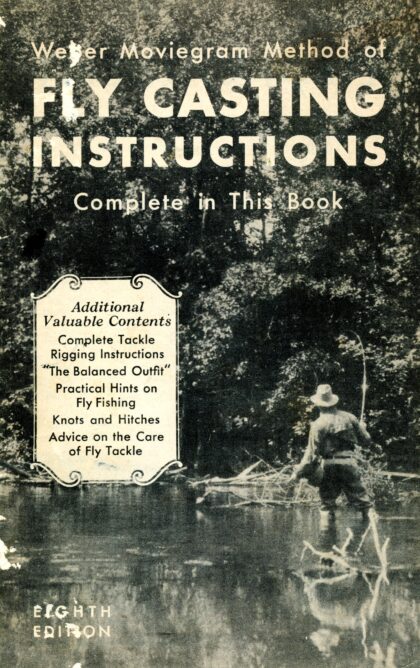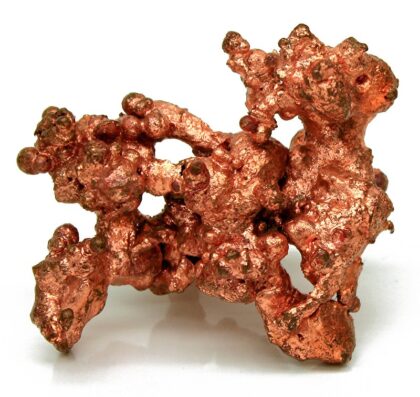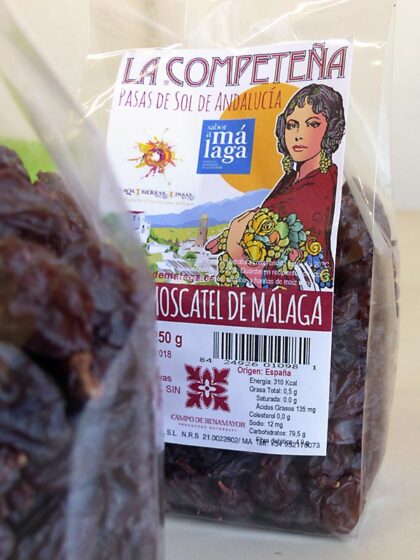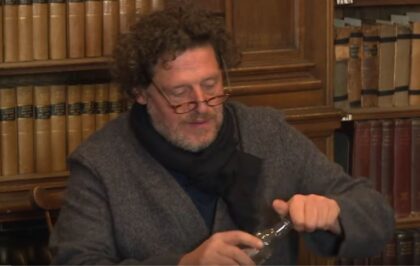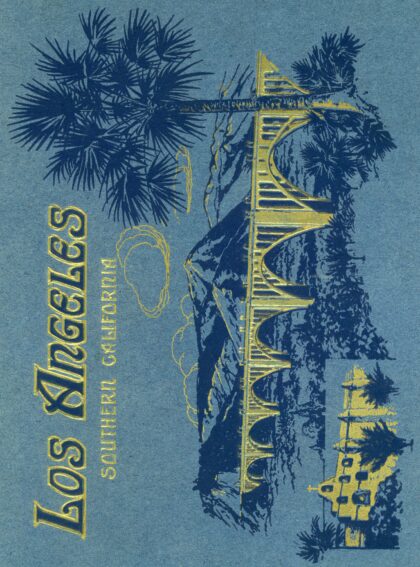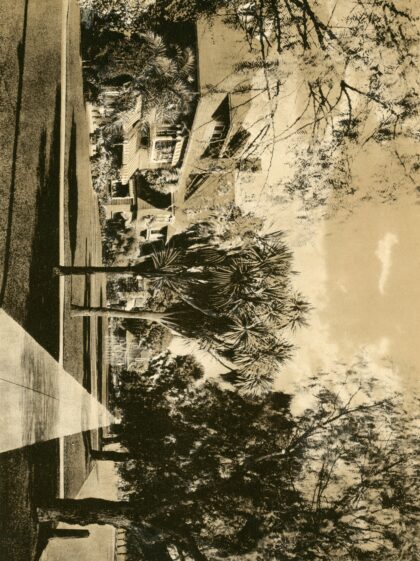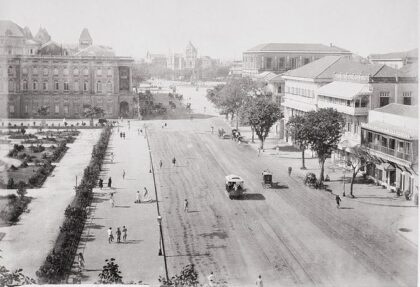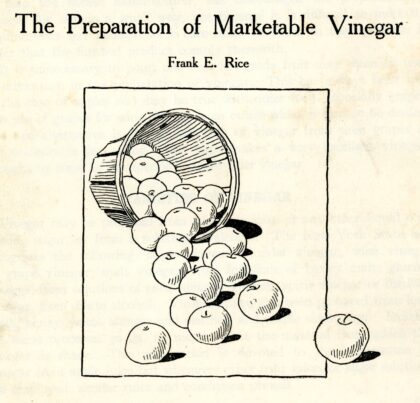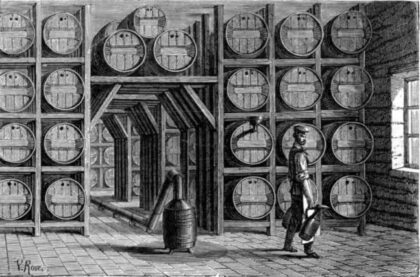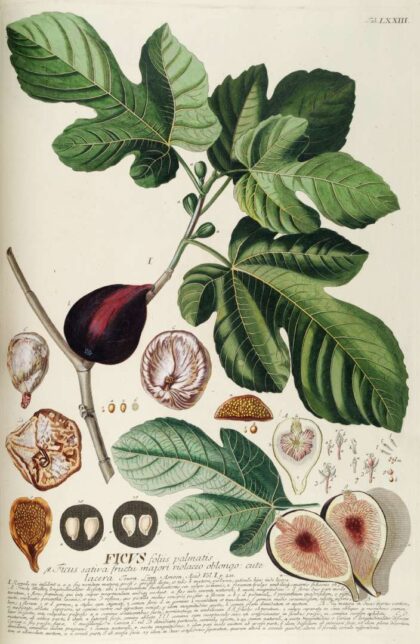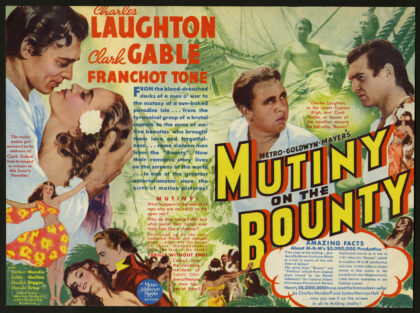
|
August 8th, 2020
Gary Kravit is an airline pilot and artist. He also owns and operates https://theultimatetaboret.com. You may view Gary’s art at https://garrykravitart.blogspot.com/ HomeTop of Pg.Category: Art & Restoration August 8th, 2020  Cannone nel castello di Haut-Koenigsbourg, photo by Gita Colmar Without any preliminary cleaning the bronze object to be treated is hung as cathode into the 2 per cent. caustic soda solution and a low amperage direct current is applied. The object is suspended with soft copper wires and is completely immersed into the solution. In case the object is very soft and fragile or completely mineralized, fine annealed copper wire is wrapped around the object, one to two turns per inch, and electrical connections are made with several turns of this wire. Where there is danger that object might not hold together upon the removal of the hard supporting shell, we have found it advisable to to pack the whole object in clean white sand, after making proper electrical connections, and then filling the containers with the caustic soda solution. Continue reading Method of Restoration for Ancient Bronzes and other Alloys HomeTop of Pg.Category: Art & Restoration August 6th, 2020  Como dome facade – Pliny the Elder – Photo by Wolfgang Sauber Work in Progress… THE VARNISHES. Every substance may be considered as a varnish, which, when applied to the surface of a solid body, gives it a permanent lustre. Drying oil, thickened by exposure to the sun’s heat or a fire, is a varnish and as such has often been employed. It is, however, probable that varnishes, composed of resins dissolved in oil, have been used in very ancient times. But it is beyond all doubt, that when the arts flourished in Greece, the composition of varnish had long been known in India, Persia, and China. It is not then to be supposed that the Greeks were unacquainted with this art. Yet such would have been the case if we give credit to a paragraph in Pliny, who tells us that Apelles was indebted for his unequalled colouring to the employment of a liquid which he calls “Atramentum,” with which he covered his pictures when they finished, and with which substance no other painter was acquainted. Pliny observes, “that there is in the pictures of Apelles a certain effect, that cannot be equalled, and that tone was obtained by means of atramentum, which fluid he passed over his pictures when the painting was completely finished. Continue reading Artist Methods HomeTop of Pg.Category: Art & Restoration August 5th, 2020 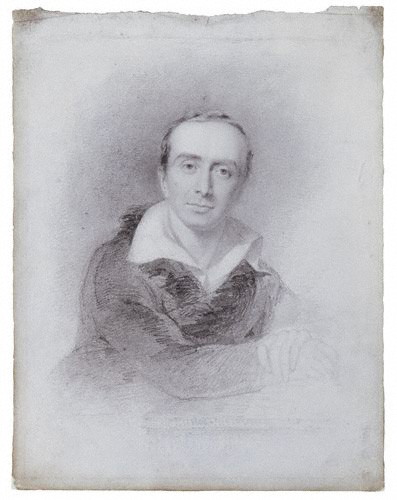 by John Partridge,drawing,1825 From the work of Sir Charles Lock Eastlake entitled Materials for a history of oil painting, (London: Longman, Brown, Green, and Longmans, 1846), we learn the following: The effect of oil at certain temperatures, in penetrating “the minute pores of the amber” (as Hoffman elsewhere writes), is still more strikingly exemplified in an invention, or perhaps and old method revived, Christian Porschinen of Königsberg, at the close of the seventeenth century (June, 1691). He succeeded in rendering amber colourless, so as to employ it as substitute for magnifying glasses. Zedler ( Grosses vollständiges Univ. Lexicon, art. Bersteinerner Brenn-Spiegel) describes the process. The manufacturer placed the amber, already formed and polished for the intended use, in linseed oil exposed to a moderate fire, and suffered it to remain till it had entirely lost its yellow colour, and had become quite clear and transparent. Zedler states that lenses so prepared are more powerful than those made of glass in igniting gunpowder (welche viel schneller in Brennen and Pulver-anzunden sind als die glasernen). The same process was afterwards adopted for clarifying amber beads, so as to render them transparent like glass. The method is probably most successful when the substance is not very thick. For a further account of this invention Zedler refers to Hen. von Sanden, Disp. de Succino Electricorum principe, Königsberg, 1714. Dreme (Der Virniss-und Kittmacher) alludes to similar methods. “Amber boiled in linseed oil is softened so that it may be bent and compressed: opaque or clouded amber by this process becomes light and transparent. The oil should be heated gradually, otherwise, the pieces of amber are liable to crack. ” Such modes of clarifying amber might be employed with effect, preparatory to its solution by some of the means before indicated. HomeTop of Pg.Category: Formulae August 5th, 2020  Hebborn Piranesi Before meeting with an untimely death at the hand of an unknown assassin in Rome on January 11th, 1996, master forger Eric Hebborn put down on paper a wealth of knowledge about the art of forgery. In a book published posthumously in 1997, titled The Art Forger’s Handbook, Hebborn suggests the following three books as being the cornerstone to any good art forger’s library:
Thus it would stand to reason that the same books should be of great interest to the international art collector. HomeTop of Pg.Category: Art & Restoration May 9th, 2021 Category: The Hunt August 4th, 2020  A Real Soda Jerk FORMULAS FROM VARIOUS SOURCES. Pineapple Frappe. Water, 1 gallon; sugar 2 pounds of water. 61/2 pints, and simple syrup. 2 1/2 pints; 2 pints of pineapple stock or 1 pint of pineapple stock and 1 pint of grated pineapple juice of 6 lemons. Mix, strain and freeze. Roman Sour. Wild cherry syrup, 1 ounce; lime juice 1/2 ounce, and the half of a fresh lime. Place in a suitable glass, and cracked ice and fill the glass with carbonated water. Top off with a maraschino cherry and a toothpick. Hot Weather Delight. Into a 10-ounce glass place half an ounce of strawberry syrup, half an ounce of raspberry syrup, half an ounce of grape syrup, one egg, one and a half ounces of plain cream. quarter glassful shaved ice. Continue reading Formulaes for Re-Creating the Old-Fashioned Drug Store Counter HomeTop of Pg.Category: Formulae May 9th, 2021 Category: The Hunt August 4th, 2020
To Clean Watch Chains. Gold or silver watch chains can be cleaned with a very excellent result, no matter whether they may be matt or polished, by laying them for a few seconds in pure aqua ammonia; they are then rinsed in alcohol, and finally. shaken in clean sawdust, free from sand. Imitation gold and plated chains are first cleaned in benzine, then rinsed in alcohol, and afterwards shaken in dry sawdust. Genuine gold chains are first dipped in the following pickle: Pure nitric acid is mixed with concentrated sulphuric acid in the proportion of ten parts of the former to two parts of the latter; a little table salt is added. The chains are boiled in this mixture, then rinsed several times in water, afterward in alcohol, and finally dried in sawdust. HomeTop of Pg.Category: Formulae August 5th, 2020
STORE MANAGEMENT—THE SHIRK. THE shirk is a well-known specimen of the genus homo. His habitat is offices, stores, business establishments of all kinds. His habits are familiar to us, but a few words on the subject will not be amiss. The shirk usually displays activity when the boss is around, and masterful inactivity when the boss is out of sight. Some times he makes a pretense of working, for the benefit of his fellow clerks. Now and then he comes out boldly and loafs openly, except on those occasions when the boss is in the neighborhood and perhaps not feeling any too indulgent. The shirk is quick to detect these changes in the official barometer. The shirk, of course, is always the last one at work and the first to depart. He takes all the sick leave permissible and generally manages to get a few days extra. Continue reading The Shirk — An Old but Familiar Phenomena HomeTop of Pg.Category: Essays August 4th, 2020
ORIGIN OF THE APOTHECARY. The origin of the apothecary in England dates much further back than one would suppose from what your correspondent, “A Barrister-at-Law,” says about it. It is true he speaks only of apothecaries as a distinct branch of the medical profession, but long before Henry VIII’s time they were recognized as a distinct branch, though the distinction may not have been a legal one. The earliest mention I remember to have seen in English of an apothecary is one I have cited before in these notes, from Bardsley’s “English Surnames.” In 1273, says Bardsley, “the Mayor of York was one John Le Espicer, aut Apotecarius.” Here “spicer” and “apothecary”‘ appear to be convertible terms, but it is clear, from the passage in Chaucer alone. “Ful redy hadde he hise apothecaries,” that these were a distinct class, and Caxton distinguishes the “physician, spicer, apotiquare” from one another. In England as in France, “Qui est espicier n’est pas apothicaire, et qui est apothicaire est espicier,” and as time went on the difference between them grew, the apothecaries confining themselves particularly to drugs. Your correspondent is rather unfair to the apothecarics when he says, speaking of them as a separate class, that they began as quacks. They began as assistants to the physicians. Earle, in describing the physician of his day, speaks repeatedly of “his” apothecary’s shop. They were subject to the supervision of the physicians, and stood to them in much the relation enjoined by the law of the Emperor Frederick II. regulating medical practice in the Sicilies.—Chem. & Drug., Sept. 1921 HomeTop of Pg.Category: Essays May 9th, 2021 Category: The Hunt August 4th, 2020
Mocking Bird Food.
HomeTop of Pg.Category: Formulae May 9th, 2021 Category: The Hunt August 4th, 2020
Furniture Polishing Cream.
Dissolve the soap in the lye with the aid of heat; add this solution all at once to the warm solution of the wax in the oil. Beat the mixture until a smooth cream is formed, and gradually beat in the water until the whole is completely emulsified. HomeTop of Pg.Category: Formulae August 4th, 2020
Cleaner for Gilt Frames.
HomeTop of Pg.Category: Art & Restoration, Formulae May 9th, 2021
BILLESDEN COPLOW POEM [From “Reminiscences of the late Thomas Assheton Smith, Esq”] The run celebrated in the following verses took place on the 24th of February, 1800, when Mr. Meynell hunted Leicestershire, and has since been known as the Billesden Coplow Run. It will only cease to interest, says a writer in the Sporting Magazine, when the grass shall grow in winter in the streets of Melton Mowbray. They found in the covert from which the song takes its name, thence to Skeffington Earths, past Tilton Woods, by Tugby and Whetstone, where the field, as many as could get over, crossed the river Soar. Thence the hounds changing their fox, carried a head to Enderby Gorse, where they lost him, after a chase of two hours and fifteen minutes, the distance being twenty-eight miles. Continue reading The Billesden Coplow Run HomeTop of Pg.Category: Poems May 9th, 2021
HomeTop of Pg.Category: Poems August 3rd, 2020 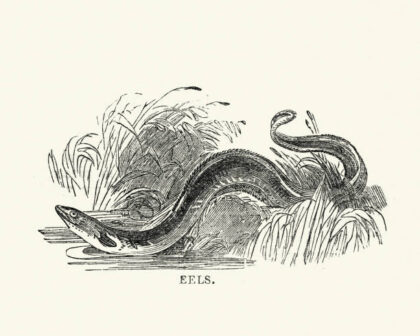 Vintage woodcut illustration of a Eel
This dish is a favorite in Northern Europe, from the British Isles to Sweden. Clean and skin the eels and cut them into pieces about 3/4-inch thick. Wash and drain the pieces, then dredge in fine salt and allow to stand from 30 minutes to 1 hour. Rinse off the salt, wipe the pieces dry, and rub them with a cut glove of garlic. Brush the eel with melted butter and broil until both sides are light brown. As an alternative, pieces may be sautéd in olive oil or other good salad oil. Place the pieces of cooked eel on absorbent paper. When the pieces are cool, pack them in layers in a crock with a scattering of sliced onion, allspice, bay leaves, mustard seed, whole cloves, peppers, and mace between the layers of fish. Continue reading Pickled Eels HomeTop of Pg.Category: Country House Cooking August 2nd, 2020
To Choose Poultry. When fresh, the eyes should be clear and not sunken, the feet limp and pliable, stiff dry feet being a sure indication that the bird has not been recently killed; the flesh should be firm and thick and if the bird is plucked there should be no discoloration of the skin. Young male birds are considered the best. Chickens, —The flesh of young chickens is the most delicate and easily assimilated of animal foods, which makes it especially suitable for invalids and persons whose digestion is weak. Few animals undergo so great a change with regard to the quality of their flesh as the domestic fowl. When quite young, cocks and hens are equally tender, but as chickens grow older the flesh of the cock is the first to toughen, and a cock a year old is fit only for conversion into soup. A hen of the same age affords a substantial and palatable dish. This rule respecting age does not apply to capons, which when well-fed and well-dressed for the table, are surpassed by few animals for delicacy of flavour. Even when three years old the capon is as tender as a chicken, with the additional advantage that his proper chicken flavour is more fully developed. The above remarks are applicable only to capons naturally fed and not crammed. The latter process may produce a handsome-looking and heavy bird, but when tested by cooking its inferiority will be only too apparent. As a rule, small-boned and short-legged poultry are generally found to be the more delicate in colour, flavour and fineness of flesh. Continue reading Mrs. Beeton’s Poultry & Game — Choosing Poultry HomeTop of Pg.Category: Country House Cooking May 9th, 2021
” Here’s many a year to you ! Here’s to the best of you ! 1908. RH Carlisle HomeTop of Pg.Category: Poems August 1st, 2020 As an Appetizer
With Oysters, Clams or Caviar
Continue reading Proper Wines to Serve with Food HomeTop of Pg.Category: Wine, Cordials, & Spirits August 4th, 2020
NAPOLEON’S PHARMACISTS. Of the making of books about Napoleon there is no end, and the centenary of his death (May 5) is not likely to pass without adding to the number, but a volume on Napoleon”s pharmacists still awaits treatment by the student in this field of historical research. There is no lack of material. Not that Napoleon had any faith in drugs. Even during his fatal illness at St. Helena he caused his doctors ceaseless anxiety by his petty tendency to offer any or every excuse for shirking regular doses. But he knew that others thought differently, and delighted to tell the tale of a certain bread pill administered to the Empress Marie Louise by Baron Corvisart, and its marvellous effects. He seems to have taken an intelligent interest in chemistry, and even to have studied its rudiments with Bouillon-Lagrange in his earlier days. W’hen he reorganized France after the Revolution he appreciated the collaboration of men like Chaptal, and gained their devotion and admiration by his own wonderful intellectual activity and physical energy. Continue reading Napoleon’s Pharmacists HomeTop of Pg.Category: Essays July 31st, 2020
It is a pity that the traditions and literature in praise of fly fishing have unconsciously hampered instead of expanded this graceful, effective sport. Many a sportsman has been anxious to share its joys, but appalled by the rapture of expression in describing its countless thrills and niceties he has been literally scared away from attempting to master the difficulties which he assumes must attend such an art. And thereby he has barred himself needlessly from an infinite wealth of sport and enjoyment. Continue reading Fly Casting Instructions HomeTop of Pg.Category: Essays July 30th, 2020 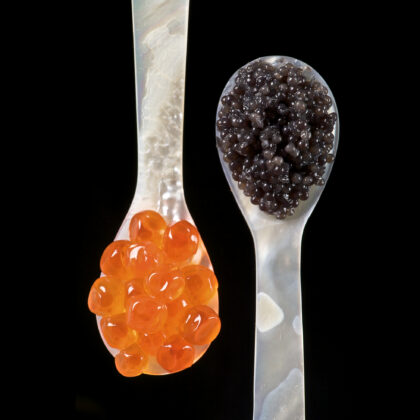 Salmon and Sturgeon Caviar – Photo by Thor Salmon caviar was originated about 1910 by a fisherman in the Maritime Provinces of Siberia, and the preparation is a modification of the sturgeon caviar method (Cobb 1919). Salomon caviar has found a good market in the U.S.S.R. and other European countries where it is known as “red caviar” to distinguish it from the sturgeon or “black caviar”. Although several attempts have been made to manufacture salmon caviar in the United States, only a few firms in the Pacific Northwest have operated successfully on a commercial scale. Their product is marketed mostly in New York and other eastern cities. A salmon-canning firm operating in the Bristol Ba area of Alaska also prepares salmon caviar, principally for export. Continue reading Salmon Caviar HomeTop of Pg.Category: Country House Cooking July 30th, 2020 No two commercial tuna salads are prepared by exactly the same formula, but they do not show the wide variety characteristic of herring salad. The recipe given here is typical. It is offered, however, only as a guide. The same recipe with minor variations to suit the taste may be used for salmon salad. Tuna Salad I Ingredients. Continue reading Commercial Tuna Salad Recipe HomeTop of Pg.Category: Country House Cooking July 29th, 2020 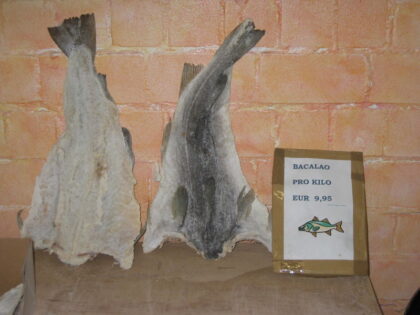 Dried Norwegian Salt Cod Fried fish cakes are sold rather widely in delicatessens and at prepared food counters of department stores in the Atlantic coastal area. This product has possibilities for other sections of the country. Ingredients: Continue reading Commercial Fried Fish Cake Recipe HomeTop of Pg.Category: Country House Cooking May 29th, 2020 Category: Country House Cooking April 18th, 2020
The element copper effectively kills viruses and bacteria. Therefore it would reason and I will assert and not only assert but lay claim to the patents for copper mesh stints to be inserted in the arteries of patients presenting with severe cases of Covid-19 with a slow release dosage of Copper Sulfate woven in, those in need of ventilators and on death’s edge. I also lay claim to any and all copper mesh filtering systems for ventilator tubing and facial masks. I have a partner in this whom will not be named, a brilliant chemist who will be entitled to split any and all financial benefit from such claims. Continue reading Copper Kills Covid-19 and the Sun is Your Friend HomeTop of Pg.Category: Apothecary April 17th, 2020  The Ardabil Carpet – Made in the town of Ardabil in north-west Iran, the burial place of Shaykh Safi al-Din Ardabili, who died in 1334. The Shaykh was a Sufi leader, ancestor of Shah Ismail, founder of the Safavid dynasty (1501-1722). While the exact origins of the carpet are unclear, it’s believed to have been commissioned by the court for the shrine of the Shaykh, which, by the 16th century, had became a place of pilgrimage. (source: Victoria & Albert Museum) Carpet Cleaners. Powder Form Sal soda…8 ounces av. (hydrated sodium carbonate)( Na2CO3∙10H2O) or soda ash. In using, this amount of material is to be dissolved in a gallon of water, then mix this with a solution of a pound of soap (any good washing soap) in 4 gallons of water. Apply this combination, preferably warm, to the carpet with a scrubbing brush, remove the lather with a wooden scraper, and dry the carpet with a flannel cloth. Continue reading Carpet Cleaner Formulae HomeTop of Pg.Category: Formulae April 8th, 2020
Take to every quart of water one pound of Malaga raisins, rub and cut the raisins small, and put them to the water, and let them stand ten days, stirring once or twice a day. You may boil the water an hour before you put it to the raisins, and let it stand to cool. At ten days’ end strain out your liquor, and put a little yeast to it; and at three days’ end put it in the vessel, and one sprig of dried wormwood. Let it be close stopped, and at three months’ end bottle it off. [From: Old Time Recipes for Home Made Wines, Cordials and Liquerurs From Fruits, Flowers, Vegetables, and Shrubs, Compiled by Helen S. Wright, Boston, The Page Company, Publishers, Copyright 1909, by Dana Estes and Company, Fourth Impression, January. 1922 Printed by C.H. Simonds Company, Boston, Mass, USA] HomeTop of Pg.Category: Wine, Cordials, & Spirits April 7th, 2020  A terrestial globe on which the tracts and discoveries are laid down from the accurate observations made by Capts Cook, Furneux, Phipps, published 1782 / globe by John Newton ; cartography by William Palmer, held by the State Library of New South Wales The British Library, using sophisticated filming equipment and software, have made available to the public quite stunning interactive videos of rare globes.
HomeTop of Pg.Category: Documentary, Debate & Lecture March 2nd, 2020 Category: Documentary, Debate & Lecture July 30th, 2020 Category: Essays January 21st, 2020
Patek Phillipe hand makes the finest watches in the world. Click here to learn more. HomeTop of Pg.Category: Documentary, Debate & Lecture January 15th, 2020
Click here for another site on which to view this video. Sadly, Sir Roger Scruton passed away a few days ago—January 12th, 2020. Heaven has gained a great philosopher. Continue reading Why Beauty Matters — Sir Roger Scruton HomeTop of Pg.Category: Documentary, Debate & Lecture January 13th, 2020
BOMBAY. On the evening of November 15th, the little village of Mahim was the scene of a murder, perhaps the most determined which has ever stained the annals of Bombay. Three men were massacred in cold blood, in a house used by the Kojah caste, in open daylight, all in the middle of a densely-populated part of the town. Thirteen prisoners are in custody. Continue reading Slaughter in Bombay HomeTop of Pg.Category: Dispatches from the Empire January 12th, 2020  Chen Lin, Water fowl, in Cahill, James. Ge jiang shan se (Hills Beyond a River: Chinese Painting of the Yuan Dynasty, 1279-1368, Taiwan edition). Taipei: Shitou chubanshe fen youxian gongsi, 1994. pl. 4:13, p. 180. Collection of the National Palace Museum, Taipei. scroll, light colors on paper, 35.7 x 47.5 cm
China has more ducks than any other country in the world. For this reason the Chinese have found interesting ways of converting the fowl into many palatable dishes. The duck used is the kind that dwells in marshes. The Muscovy duck is not a native of China and is called foreign duck. FRIED DUCK Clean and disjoint a young duck. Sprinkle with salt and pepper. Cover the bottom of frying pan with peanut oil about half an inch deep. When oil sizzles, put in the pieces of duck and fry slowly until a delicate brown, turning the pieces occasionally. Mix six tablespoons Chinese saucea in half a cup of water with a piece of shredded ginger, four tablespoonful of wine, and few green onion sprouts. Pour contents over the duck, cover, and let cook over slow fire for 20 minutes longer. a(soyu or soy sauce) Continue reading Chinese Duck Cooking — A Few Recipes HomeTop of Pg.Category: Country House Cooking January 12th, 2020
It is unnecessary to point out that low-grade fruit may often be used to advantage in the preparation of vinegar. This has always been true in the case of apples and may be true with other fruit, especially grapes. The use of grapes for wine making is an outlet which in now to be denied, and one alternative is the manufacture of vinegar from such grapes as are undesirable for eating. The juice makes a very excellent vinegar, thought be some to be the superior to apple-cider vinegar. Continue reading The Preparation of Marketable Vinegar HomeTop of Pg.Category: Wine, Cordials, & Spirits January 8th, 2020
The greatest cause of failure in vinegar making is carelessness on the part of the operator. Intelligent separation should be made of the process into its various steps from the beginning to end. PRESSING THE JUICE The apples should be clean and ripe. If not clean, undesirable fermentations may develop which will injure the quality of the finished product. Fruit which is just ripe contains the maximum amount of sugar. If the fruit is too green or over-ripe there may not be sufficient sugar present for the final production of a per cent acetic acid. Dirt, grass, leaves, rotten and wormy fruit bear millions of bacteria, some of which are sure to be of undesirable varieties. These may be the cause of bad flavors, and may make the vinegar low in acid, off-color, and turbid. Continue reading Making Apple Cider Vinegar HomeTop of Pg.Category: Wine, Cordials, & Spirits January 8th, 2020
Take the large blue figs when pretty ripe, and steep them in white wine, having made some slits in them, that they may swell and gather in the substance of the wine. Then slice some other figs and let them simmer over a fire in water until they are reduced to a kind of pulp. Then strain out the water, pressing the pulp hard and pour it as hot as possible on the figs that are imbrued in the wine. Let the quantities be nearly equal, but the water somewhat more than the wine and figs. Let them stand twenty-four hours, mash them well together, and draw off what will run without squeezing. Then press the rest, and if not sweet enough add a sufficient quantity of sugar to make it so. Let it ferment, and add to it a little honey and sugar candy, then fine it with white of eggs, and a little isinglass, and draw it off for use. [From: Old Time Recipes for Home Made Wines, Cordials and Liquerurs From Fruits, Flowers, Vegetables, and Shrubs, Compiled by Helen S. Wright, Boston, The Page Company, Publishers, Copyright 1909, by Dana Estes and Company, Fourth Impression, January. 1922 Printed by C.H. Simonds Company, Boston, Mass, USA]
HomeTop of Pg.Category: Wine, Cordials, & Spirits January 8th, 2020 Category: Music January 8th, 2020 Category: Documentary, Debate & Lecture, Film January 6th, 2020  Guarea guidonia Recipe
Dose – One-half to one fluidrams (2 to 4 ct) Guaranteed under The Food and Drug Act. June 30th, 1906 Guranty No. 6, Park, Davis & Co. Detroit Michigan HomeTop of Pg.Category: Wine, Cordials, & Spirits |
A Crock of Squirrel
A CROCK OF SQUIRREL 4 young squirrels – quartered Salt & Pepper 1 large bunch of fresh coriander 2 large cloves of garlic 2 tbsp. salted sweet cream cow butter ¼ cup of brandy 1 tbsp. turbinado sugar 6 fresh apricots 4 strips of bacon 1 large package of Monterrey [...] Read more →Carpenters’ Furniture
IT requires a far search to gather up examples of furniture really representative in this kind, and thus to gain a point of view for a prospect into the more ideal where furniture no longer is bought to look expensively useless in a boudoir, but serves everyday and commonplace need, such as [...] Read more → Arban’s Complete Conservatory Method for Trumpet(Cornet) – Free Download
Click here to view a copy of Arban’s Complete Conservatory Method for Cornet Click on the blue button to download a free copy of Arban’s Complete Conservatory Method for Cornet Arban's - 11.8MB For trumpet players wishing to practice daily using an iPad, simply click [...] Read more → Shooting in Wet Weather
Reprint from The Sportsman’s Cabinet and Town and Country Magazine, Vol I. Dec. 1832, Pg. 94-95 To the Editor of the Cabinet. SIR, Possessing that anxious feeling so common among shooters on the near approach of the 12th of August, I honestly confess I was not able [...] Read more → On the Growth of Plants in Closely Glazed Cases by Nathaniel Bagwell Ward
What follows is a chapter from Nathaniel Bagshaw Ward’s 1852 treatise on terrarium gardening. ON THE NATURAL CONDITIONS OF PLANTS. To enter into any lengthened detail on the all-important subject of the Natural Conditions of Plants would occupy far too much space; yet to pass it by without special notice, [...] Read more → The Mayfair SetThe Stock Exchange Specialist
New York Stock Exchange Floor September 26,1963 The Specialist as a member of a stock exchange has two functions.’ He must execute orders which other members of an exchange may leave with him when the current market price is away from the price of the orders. By executing these orders on behalf [...] Read more → Protecting Rare Books: How to Build a Silverfish Trap
Silverfish damage to book – photo by Micha L. Rieser The beauty of hunting silverfish is that they are not the most clever of creatures in the insect kingdom. Simply take a small clean glass jar and wrap it in masking tape. The masking tape gives the silverfish something to [...] Read more → Zulu Yawl
Dec. 10, 1898 Forest and Stream Pg. 477-479 Zulu. The little ship shown in the accompanying plans needs no description, as she speaks for herself, a handsome and shipshape craft that a man may own for years without any fear that she will go to pieces [...] Read more → Watch Fraud on eBay
EBAY’S FRAUD PROBLEM IS GETTING WORSE EBay has had a problem with fraudulent sellers since its inception back in 1995. Some aspects of the platform have improved with algorithms and automation, but others such as customer service and fraud have gotten worse. Small sellers have definitely been hurt by eBay’s [...] Read more → Copper Kills Covid-19 and the Sun is Your Friend
The element copper effectively kills viruses and bacteria. Therefore it would reason and I will assert and not only assert but lay claim to the patents for copper mesh stints to be inserted in the arteries of patients presenting with severe cases of Covid-19 with a slow release dosage of [...] Read more → Fox Hunting Season 1964Home Top of Pg. Read more → Fox Control with Jack Russell Terriers in ScotlandHome Top of Pg. Read more → A Survey of Palestine – 1945-1946
This massive volume gives one a real visual sense of what it was like running a highly efficient colonial operation in the early 20rh Century. It will also go a long way to help anyone wishing to understand modern political intrigue in the Middle-East. Click here to read A Survey of Palestine [...] Read more →44 Berkeley Square
The Clermont Club Reprint from London Bisnow/UK At £23M, its sale is not the biggest property deal in the world. But the Clermont Club casino in Berkeley Square in London could lay claim to being the most significant address in modern finance — it is where the concept of what is today [...] Read more → Greatest of All TimeHome Top of Pg. Read more → Chronological Catalog of Recorded Lunar Events
In July of 1968, the National Aeronautics and Space Administration(NASA), published NASA Technical Report TR R-277 titled Chronological Catalog of Recorded Lunar Events. The catalog begins with the first entry dated November 26th, 1540 at ∼05h 00m: Feature: Region of Calippus2 Description: Starlike appearance on dark side Observer: Observers at Worms Reference: [...] Read more →Sir Peter Francis Bourgeois and the Dulwich Picture Gallery
Noel Desenfans and Sir Francis Bourgeois, circa 1805 by Paul Sandby, watercolour on paper The Dulwich Picture Gallery was England’s first purpose-built art gallery and considered by some to be England’s first national gallery. Founded by the bequest of Sir Peter Francis Bourgois, dandy, the gallery was built to display his vast [...] Read more → He Put a Hook in Me by Lil’ Lost Lou
Click here to visit Lil’ Lost Lou and purchase a copy of her latest album. Home Top of Pg. Read more →Gallop of the Common Horse by Eadweard Muybridge 1887
Eadweard Muybridge was a fascinating character. Click here to learn how Eadweard committed “Justifiable Homicide” after shooting his wife’s lover in 1874. Home Top of Pg. Read more →English Fig Wine
Take the large blue figs when pretty ripe, and steep them in white wine, having made some slits in them, that they may swell and gather in the substance of the wine. Then slice some other figs and let them simmer over a fire in water until they are reduced [...] Read more → Patek Phillipe Service and Maintenance
Patek Phillipe hand makes the finest watches in the world. Click here to learn more. Home Top of Pg. Read more →WaterlooHome Top of Pg. Read more → Clover WineAdd 3 quarts clover blossoms* to 4 quarts of boiling water removed from heat at point of boil. Let stand for three days. At the end of the third day, drain the juice into another container leaving the blossoms. Add three quarts of fresh water and the peel of one lemon to the blossoms [...] Read more → Mocking Bird Food
Mocking Bird Food. Hemp seed……….2 pounds Rape seed………. .1 pound Crackers………….1 pound Rice…………….1/4 pound Corn meal………1/4 pound Lard oil…………1/4 poundHome Top of Pg. Read more → Making Quality Linen and Canvas Painting Panels
Gary Kravit is an airline pilot and artist. He also owns and operates https://theultimatetaboret.com. You may view Gary’s art at https://garrykravitart.blogspot.com/ Home Top of Pg. Read more →Flawed Law – The Hunting ActTemples, Walls, And Some of the Roman Antiquities of Bath
A Lecture Delivered at the Guildhall, March 2, 1853 by Rev. H.M. Scarth, M.A., Rector of Bathwick. To understand the ancient history of the country in which we live, to know something of the arts and manners of the people who have preceded us, to ascertain what we owe [...] Read more → Fruits of the Empire: Licorice Root and Juice
Liquorice, the roots of Glycirrhiza Glabra, a perennial plant, a native of the south of Europe, but cultivated to some extent in England, particularly at Mitcham, in Surrey. Its root, which is its only valuable part, is long, fibrous, of a yellow colour, and when fresh, very juicy. [...] Read more → ZZ Top at Gruene HallHome Top of Pg. Read more → King James Bible – Knights Templar Edition
Full Cover, rear, spine, and front Published by Piranesi Press in collaboration with Country House Essays, this beautiful paperback version of the King James Bible is now available for $79.95 at Barnes and Noble.com This is a limited Edition of 500 copies Worldwide. Click here to view other classic books [...] Read more → Knots The Sailors UseThe Most Powerful and FREE Import Export Research Database on the Planet
Click here to access the world’s most powerful Import/Export Research Database on the Planet. With this search engine one is able to access U.S. Customs and other government data showing suppliers for any type of company in the United States. Home Top of Pg. Read more →Seeds for Rootstocks of Fruit and Nut Trees
Citrus Fruit Culture THE PRINCIPAL fruit and nut trees grown commercially in the United States (except figs, tung, and filberts) are grown as varieties or clonal lines propagated on rootstocks. Almost all the rootstocks are grown from seed. The resulting seedlings then are either budded or grafted with propagating wood [...] Read more → The Kalmar War
Wojna Kalmarska – 1611 The Kalmar War From The Historian’s History of the World (In 25 Volumes) by Henry Smith William L.L.D. – Vol. XVI.(Scandinavia) Pg. 308-310 The northern part of the Scandinavian peninsula, as already noticed, had been peopled from the remotest times by nomadic tribes called Finns or Cwenas by [...] Read more → Here’s Many a Year to You
” Here’s many a year to you ! Sportsmen who’ve ridden life straight. Here’s all good cheer to you ! Luck to you early and late. Here’s to the best of you ! You with the blood and the nerve. Here’s to the rest of you ! What of a weak moment’s swerve ? [...] Read more → Cleaning Oil Paint Brushes with Linseed Oil and Yardley of London Shea Butter Soap
Linseed oil is readily available in many oil painters’ studios. Yardley London Shea Butter Soap can be purchased from a dollar store or pound shop on the cheap. These two ingredients make for the basis of an excellent cleaning system for cleaning oil painting brushes. Home Top of [...] Read more →A Video of Upmost Importance for the Sharp Young Man Seeking Success in LifeHome Top of Pg. Read more → Why Beauty Matters
Roger Scruton by Peter Helm This is one of those videos that the so-called intellectual left would rather not be seen by the general public as it makes a laughing stock of the idiots running the artworld, a multi-billion dollar business. https://archive.org/details/why-beauty-matters-roger-scruton or Click here to watch [...] Read more →How to Paint a VermeerSenate Report on Dividend Tax Abuse Using Offshore Banking
U.S. SENATE PERMANENT SUBCOMMITTEE ON INVESTIGATIONS STAFF REPORT ON DIVIDEND TAX ABUSE: HOW OFFSHORE ENTITIES DODGE TAXES ON U.S. STOCK DIVIDENDS September 11, 2008 EXECUTIVE SUMMARY Each year, the United States loses an estimated [...] Read more → Gold and Economic Freedom
by Alan Greenspan, 1967 An almost hysterical antagonism toward the gold standard is one issue which unites statists of all persuasions. They seem to sense-perhaps more clearly and subtly than many consistent defenders of laissez-faire — that gold and economic freedom are inseparable, that the gold standard is an instrument [...] Read more → The Flying Saucers are Real by Donald Keyhoe
It was a strange assignment. I picked up the telegram from desk and read it a third time. NEW YORK, N.Y., MAY 9, 1949 HAVE BEEN INVESTIGATING FLYING SAUCER MYSTERY. FIRST TIP HINTED GIGANTIC HOAX TO COVER UP OFFICIAL SECRET. BELIEVE IT MAY HAVE BEEN PLANTED TO HIDE [...] Read more → Furniture Polishing Cream
Furniture Polishing Cream. Animal oil soap…………………….1 onuce Solution of potassium hydroxide…. .5 ounces Beeswax……………………………1 pound Oil of turpentine…………………..3 pints Water, enough to make……………..5 pintsDissolve the soap in the lye with the aid of heat; add this solution all at once to the warm solution of the wax in the oil. Beat [...] Read more → Popular Mechanics Archive
Click here to access the Internet Archive of old Popular Mechanics Magazines – 1902-2016 Click here to view old Popular Mechanics Magazine Covers Home Top of Pg. Read more →Muscadine Jelly
Muscadine Jelly 6 cups muscadine grape juice 6 cups sugar 1 box Kraft Sure Gel or Ball Fruit Jell Home Top of [...] Read more →Lecture by Professor David Crystal: The Influence of the King James Bible on the English LanguageHome Top of Pg. Read more → The Hardwood Handbook – An Illustrated Guide to Appalachian and Southern Lumber
Carya Nuts This Handbook is Published by SLMA or the Southeastern Lumber Manufacturer’s Association Click here to read the handbook or click on the link below for a faster download. Hardwood Handbook Home Top of Pg. Read more →Making Apple Cider Vinegar
The greatest cause of failure in vinegar making is carelessness on the part of the operator. Intelligent separation should be made of the process into its various steps from the beginning to end. PRESSING THE JUICE The apples should be clean and ripe. If not clean, undesirable fermentations [...] Read more → CIA 1950s Unevaluated UFO Intelligence
CENTRAL INTELLIGENCE AGENCY INROMATION FROM FOREIGN DOCUMENT OR RADIO BROADCASTS COUNTRY: Non-Orbit SUBJECT: Military – Air – Scientific – Aeronautics HOW PUBLISHED: Newspapers WHERE PUBLISHED: As indicated DATE PUBLISHED: 12 Dec 1953 – 12 Jan 1954 LANGUAGE: Various SOURCE: As indicated REPORT NO. 00-W-30357 DATE OF INFORMATION: 1953-1954 DATE DIST. 27 [...] Read more → Mrs. Beeton’s Poultry & Game – Choosing Poultry
To Choose Poultry. When fresh, the eyes should be clear and not sunken, the feet limp and pliable, stiff dry feet being a sure indication that the bird has not been recently killed; the flesh should be firm and thick and if the bird is plucked there should be no [...] Read more → On Bernini’s Bust of a Stewart King
As reported in the The Colac Herald on Friday July 17, 1903 Pg. 8 under Art Appreciation as a reprint from the Westminster Gazette ART APPRECIATION IN THE COMMONS. The appreciation of art as well as of history which is entertained by the average member of the [...] Read more → List of the 60 Franklin Library Signed Limited Editions
The following highly collectible Franklin Library Signed Editions were published between 1977 and 1982. They are all fully leather bound with beautiful covers and contain gorgeous and rich silk moire endpapers. Signatures are protected by unattached tissue inserts. The values listed are average prices that were sought by [...] Read more → The Hunt Saboteur
The Hunt Saboteur is a national disgrace barking out loud, black mask on her face get those dogs off, get them off she did yell until a swift kick from me mare her voice it did quell and sent the Hunt Saboteur scurrying up vale to the full cry of hounds drowning out her [...] Read more → Commercial Tuna Salad Recipe
Tom Oates, aka Nabokov at en.wikipedia No two commercial tuna salads are prepared by exactly the same formula, but they do not show the wide variety characteristic of herring salad. The recipe given here is typical. It is offered, however, only as a guide. The same recipe with minor variations to suit [...] Read more → Thomas Jefferson’s Garden BookHome Top of Pg. Read more → The Crime of the Congo by Arthur Conan Doyle
Man looks at severed hand and foot….for refusing to climb a tree to cut rubber for King Leopold Click here to read The Crime of the Congo by Arthur Conan DoyleVictim of King Leopold of Belgium Click on the link below for faster download. The [...] Read more → The Human Seasons
John Keats Four Seasons fill the measure of the year; There are four seasons in the mind of man: He has his lusty spring, when fancy clear Takes in all beauty with an easy span; He has his Summer, when luxuriously Spring’s honied cud of youthful thoughts he loves To ruminate, and by such [...] Read more → The Racing Knockabout Gosling
The Racing Knockabout Gosling. Gosling was the winning yacht of 1897 in one of the best racing classes now existing in this country, the Roston knockabout class. The origin of this class dates back about six years, when Carl, a small keel cutter, was built for C. H. [...] Read more → Stoke Park – Granted by King Charles I
Stoke Park Pavillions
Stoke Park Pavilions, UK, view from A405 Road. photo by Wikipedia user Cj1340
From Wikipedia: Stoke Park – the original house Stoke park was the first English country house to display a Palladian plan: a central house with balancing pavilions linked by colonnades or [...] Read more → Period Furniture IdentificationHow to Distinguish Fishes
Sept. 3, 1898. Forest and Stream Pg. 188-189 How to Distinguish Fishes. BY FRED MATHER. The average angler knows by sight all the fish which he captures, but ask him to describe one and he is puzzled, and will get off on the color of the fish, which is [...] Read more → So You Bought a Rolex Tulip but Now It’s Time to Move On
Today I shall share a bit of market wisdom that will be hard to swallow for some Rolex owners, especially if they bought their Submariner at the top of the magical Covid Watch Bubble that has now collapsed. History often repeats itself, even in the stock market, but when [...] Read more → A Summer Memory
Here, where these low lush meadows lie, We wandered in the summer weather, When earth and air and arching sky, Blazed grandly, goldenly together. And oft, in that same summertime, We sought and roamed these self-same meadows, When evening brought the curfew chime, And peopled field and fold with shadows. I mind me [...] Read more → The Black Grouper or Jewfish.
Nov. 5. 1898 Forest and Stream Pg. 371-372 The Black Grouper or Jewfish. New Smyrna, Fla., Oct. 21.—Editor Forest and Stream: It is not generally known that the fish commonly called jewfish. warsaw and black grouper are frequently caught at the New Smyrna bridge [...] Read more → Cocillana Syrup Compound
Guarea guidonia Recipe 5 Per Cent Alcohol 8-24 Grain – Heroin Hydrochloride 120 Minims – Tincture Euphorbia Pilulifera 120 Minims – Syrup Wild Lettuce 40 Minims – Tincture Cocillana 24 Minims – Syrup Squill Compound 8 Gram – Ca(s)ecarin (P, D, & Co.) 8-100 Grain MentholDose – One-half to one fluidrams (2 to [...] Read more → Why Beauty Matters – Sir Roger Scruton
Roger Scruton – Why Beauty Matters (2009) from Mirza Akdeniz on Vimeo. Click here for another site on which to view this video. Sadly, Sir Roger Scruton passed away a few days ago—January 12th, 2020. Heaven has gained a great philosopher. Home Top of [...] Read more →The American Museum in Britain – From Florida to Bath
Hernando de Soto (c1496-1542) Spanish explorer and his men torturing natives of Florida in his determination to find gold. Hand-coloured engraving. John Judkyn Memorial Collection, Freshford Manor, Bath The print above depicts Spanish explorer Hernando de Soto and his band of conquistadors torturing Florida natives in order to extract information on where [...] Read more → The Hatha Yoga Pradipika
THE HATHA YOGA PRADIPIKA Translated into English by PANCHAM SINH Panini Office, Allahabad [1914] INTRODUCTION. There exists at present a good deal of misconception with regard to the practices of the Haṭha Yoga. People easily believe in the stories told by those who themselves [...] Read more → The Late Rev. H.M. Scarth
H. M. Scarth, Rector of Wrington By the death of Mr. Scarth on the 5th of April, at Tangier, where he had gone for his health’s sake, the familiar form of an old and much valued Member of the Institute has passed away. Harry Mengden Scarth was bron at Staindrop in Durham, [...] Read more → Gold: The Story of Man’s 6000 Year Old ObsessionThe Restoration of Rosa Bonheurs Horse FairHome Top of Pg. Read more → The Field of the Cloth of Gold
Reprint from the Royal Collection Trust Website The meeting between Henry VIII and Francis I, known as the Field of the Cloth of Gold, took place between 7 to 24 June 1520 in a valley subsequently called the Val d’Or, near Guisnes to the south of Calais. The [...] Read more → Professional Cleaning an Antique RugHome Top of Pg. Read more → The Intaglio Processes for Audubon’s Birds of America
Notes on the intaglio processes of the most expensive book on birds available for sale in the world today. The Audubon prints in “The Birds of America” were all made from copper plates utilizing four of the so called “intaglio” processes, engraving, etching, aquatint, and drypoint. Intaglio [...] Read more → Guaranteed 6% Dividend for Life. Any takers?
Any prudent investor would jump at the chance to receive a guaranteed 6% dividend for life. So how does one get in on this action? The fact of the matter is…YOU can’t…That is unless you are a shareholder of one of the twelve Federal Reserve Banks and the banks under [...] Read more → Texas Tarpon
Early Texas photo of Tarpon catch – Not necessarily the one mentioned below… July 2, 1898. Forest and Stream Pg.10 Texas Tarpon. Tarpon, Texas.—Mr. W. B. Leach, of Palestine, Texas, caught at Aransas Pass Islet, on June 14, the largest tarpon on record here taken with rod and reel. The [...] Read more → Some Notes on American Ship Worms
July 9, 1898. Forest and Stream Pg. 25 Some Notes on American Ship-Worms. [Read before the American Fishes Congress at Tampa.] While we wish to preserve and protect most of the products of our waters, these creatures we would gladly obliterate from the realm of living things. For [...] Read more → Beef Jerky
BEEF JERKY Preparation. Slice 5 pounds lean beef (flank steak or similar cut) into strips 1/8 to 1/4 inch thick, 1 to 2 inches wide, and 4 to 12 inches long. Cut with grain of meat; remove the fat. Lay out in a single layer on a smooth clean surface (use [...] Read more →Origin of the Apothecary
ORIGIN OF THE APOTHECARY. The origin of the apothecary in England dates much further back than one would suppose from what your correspondent, “A Barrister-at-Law,” says about it. It is true he speaks only of apothecaries as a distinct branch of the medical profession, but long before Henry VIII’s time [...] Read more → What is the Meaning of the Term Thorough-bred Fox-hound
Reprint from the Sportsman Cabinet and Town & Country Magazine, Vol.1, Number 1, November 1832. MR. Editor, Will you allow me to inquire, through the medium of your pages, the correct meaning of the term thorough-bred fox-hound? I am very well aware, that the expression is in common [...] Read more → Platform of the American Institute of Banking in 1919
Resolution adapted at the New Orleans Convention of the American Institute of Banking, October 9, 1919: “Ours is an educational association organized for the benefit of the banking fraternity of the country and within our membership may be found on an equal basis both employees and employers; [...] Read more → Cocktails and Canapés
From The How and When, An Authoritative reference reference guide to the origin, use and classification of the world’s choicest vintages and spirits by Hyman Gale and Gerald F. Marco. The Marco name is of a Chicago family that were involved in all aspects of the liquor business and ran Marco’s Bar [...] Read more → Looking for a Gift for the Book Collector in the Family?
Buying a book for a serious collector with refined tastes can be a daunting task. However, there is one company that publishes some of the finest reproduction books in the world, books that most collectors wouldn’t mind having in their collection no matter their general preference or specialty. Read more → A Creative Approach to Saving Ye Olde Cassette Tapes
Quite possibly, the most agonizing decision being made by Baby Boomers across the nation these days is what to do with all that vintage Hi-fi equipment and boxes full of classic rock and roll cassettes and 8-Tracks. I faced this dilemma head-on this past summer as I definitely wanted in [...] Read more → The Trump Bible Now Available for Sale at Barnes and NobleOf Interest to Heavy Drinkers: Cleansing the Liver with Northern Ground Cone (Boschniaka rossica)
The following research discussion is from a study funded by the U.S. National Institute of Health entitled: Boschniakia rossica prevents the carbon tetrachloride-induced hepatotoxicity in rat. It may be of interest to heavy drinkers. Home Top of [...] Read more →Fly Casting Instructions
It is a pity that the traditions and literature in praise of fly fishing have unconsciously hampered instead of expanded this graceful, effective sport. Many a sportsman has been anxious to share its joys, but appalled by the rapture of expression in describing its countless thrills and niceties he has been literally [...] Read more → King Lear
Edwin Austin Abbey. King Lear, Act I, Scene I (Cordelia’s Farewell) The Metropolitan Museum of Art. Dates: 1897-1898 Dimensions: Height: 137.8 cm (54.25 in.), Width: 323.2 cm (127.24 in.) Medium: Painting – oil on canvas Home Top of Pg. Read more → Method of Restoration for Ancient Bronzes and other Alloys
Cannone nel castello di Haut-Koenigsbourg, photo by Gita Colmar Without any preliminary cleaning the bronze object to be treated is hung as cathode into the 2 per cent. caustic soda solution and a low amperage direct current is applied. The object is suspended with soft copper wires and is completely immersed into [...] Read more → Henry Miller in RedsHome Top of Pg. Read more → David Starkey: Britain’s Last Great Historian
Dr. David Starkey, the UK’s premiere historian, speaks to the modern and fleeting notion of “cancel culture”. Starkey’s brilliance is unparalleled and it has become quite obvious to the world’s remaining Western scholars willing to stand on intellectual integrity that a few so-called “Woke Intellectuals” most certainly cannot undermine [...] Read more → Fortune, Independence, and Competence
THE answer to the question, What is fortune has never been, and probably never will be, satisfactorily made. What may be a fortune for one bears but small proportion to the colossal possessions of another. The scores or hundreds of thousands admired and envied as a fortune in most of our communities [...] Read more → Of Decorated Furniture
DECORATED or “sumptuous” furniture is not merely furniture that is expensive to buy, but that which has been elaborated with much thought, knowledge, and skill. Such furniture cannot be cheap, certainly, but the real cost of it is sometimes borne by the artist who produces rather than by the man who may [...] Read more → Magna Carta: Myth and Meaning – Discussion at the Royal Institution
Note on Watercolour: F.A. Molony (fl. 1930-1938) was a Major in the Royal Engineers. The National Army Museum hold his work. His work was also shown at an exhibition of officers work at the R.B.A. Galleries (Army Officers’ Art Society) Description from Youtube: June 2015 will see [...] Read more → The Fowling Piece – Part I
THE FOWLING PIECE, from the Shooter’s Guide by B. Thomas – 1811. I AM perfectly aware that a large volume might be written on this subject; but, as my intention is to give only such information and instruction as is necessary for the sportsman, I shall forbear introducing any extraneous [...] Read more → The Standard Navy Cutter and a Whale Boat Design
Dec. 24, 1898 Forest and Stream Pg. 513-514 The Standard Navy Boats. Above we find, The accompanying illustrations show further details of the standard navy boats, the lines of which appeared last week. In all of these boats, as stated previously, the quality of speed has been given [...] Read more → Spem In Alium performed by The Tallis ScholarsWine Making
Wine Making Grapes are the world’s leading fruit crop and the eighth most important food crop in the world, exceeded only by the principal cereals and starchytubers. Though substantial quantities are used for fresh fruit, raisins, juice and preserves, most of the world’s annual production of about 60 million [...] Read more → Travels by Narrowboat
Oh Glorious England, verdant fields and wandering canals… In this wonderful series of videos, the CountryHouseGent takes the viewer along as he chugs up and down the many canals crisscrossing England in his classic Narrowboat. There is nothing like a free man charting his own destiny. Read more → Country House Essays
Country House Essays has returned after a good long summer holiday. More essays soon. Home Top of Pg. Read more →If a Woman asks you to Change, Politely Excuse Yourself and Walk out the Door; Forever
If a Woman asks you to Change, Politely Excuse Yourself and Walk out the Door; Forever Nobody changes; character is built early in life, and by the time one is involved in adult relationships, it is highly unlikely that one can rebuild one’s character. Recognizing this early on in ones adult [...] Read more → A Conversation between H.F. Leonard and K. Higashi
H.F. Leonard was an instructor in wrestling at the New York Athletic Club. Katsukum Higashi was an instructor in Jujitsu. “I say with emphasis and without qualification that I have been unable to find anything in jujitsu which is not known to Western wrestling. So far as I can see, [...] Read more → Thomas Jefferson Correspondence – On Seed Saving and Sharing
The following are transcripts of two letters written by the Founding Father Thomas Jefferson on the subject of seed saving. “November 27, 1818. Monticello. Thomas Jefferson to Henry E. Watkins, transmitting succory seed and outlining the culture of succory.” [Transcript] Thomas Jefferson Correspondence Collection Collection 89 Read more → Chinese 9 Course Dinner
The following recipes form the most popular items in a nine-course dinner program: BIRD’S NEST SOUP Soak one pound bird’s nest in cold water overnight. Drain the cold water and cook in boiling water. Drain again. Do this twice. Clean the bird’s nest. Be sure [...] Read more → Rendering Amber Clear for Use in Lens-Making for Magnifying Glass
by John Partridge,drawing,1825 From the work of Sir Charles Lock Eastlake entitled Materials for a history of oil painting, (London: Longman, Brown, Green, and Longmans, 1846), we learn the following: The effect of oil at certain temperatures, in penetrating “the minute pores of the amber” (as Hoffman elsewhere writes), is still more [...] Read more → Great Indian Pine HornbillHome Top of Pg. Read more → Making a High-end TurntableSomething about Caius College, Cambridge
Gate of Honour, Caius Court, Gonville & Caius Gonville & Caius College, known as Caius and pronounced keys was founded in 1348 by Edmund Gonville, the Rector of Terrington St Clement in Norfolk. The first name was thus Goville Hall and it was dedicated to the Annunciation of the Blessed Virgin Mary. [...] Read more → The Famous Kilkenny Hunt – 1930Home Top of Pg. Read more → A History of Fowling – Ravens and Jays
From A History of Fowling, Being an Account of the Many Curios Devices by Which Wild Birds are, or Have Been, Captured in Different Parts of the World by Rev. H.A. MacPherson, M.A. THE RAVEN (Corvus corax) is generally accredited with a large endowment of mother wit. Its warning [...] Read more → Glimpses from the Chase
From Fores’s Sporting Notes and Sketches, A Quarterly Magazine Descriptive of British, Indian, Colonial, and Foreign Sport with Thirty Two Full Page Illustrations Volume 10 1893, London; Mssrs. Fores Piccadilly W. 1893, All Rights Reserved. GLIMPSES OF THE CHASE, Ireland a Hundred Years Ago. By ‘Triviator.’ FOX-HUNTING has, like Racing, [...] Read more → Feeding the Hounds at Chateau ChevernyFox Hunting Season Opens 1935 – Heythrop Country at Lower Swell, near Stow-in-the-Wold, GloucestershireHome Top of Pg. Read more → Fresh Water Angling – The Two Crappies
July 2, 1898 Forest and Stream, Fresh-Water Angling. No. IX.—The Two Crappies. BY FRED MATHER. Fishing In Tree Tops. Here a short rod, say 8ft., is long enough, and the line should not be much longer than the rod. A reel is not [...] Read more → Slaughter in Bombay
From Allen’s Indian Mail, December 3rd, 1851 BOMBAY. MUSULMAN FANATICISM. On the evening of November 15th, the little village of Mahim was the scene of a murder, perhaps the most determined which has ever stained the annals of Bombay. Three men were massacred in cold blood, in a house used [...] Read more → Chantry Chapels
William Wyggeston’s chantry house, built around 1511, in Leicester: The building housed two priests, who served at a chantry chapel in the nearby St Mary de Castro church. It was sold as a private dwelling after the dissolution of the chantries. A Privately Built Chapel Chantry, chapel, generally within [...] Read more → Commercial Fried Fish Cake Recipe
Dried Norwegian Salt Cod Fried fish cakes are sold rather widely in delicatessens and at prepared food counters of department stores in the Atlantic coastal area. This product has possibilities for other sections of the country. Ingredients: Home Top of [...] Read more →Curing Diabetes With an Old Malaria Formula
For years in the West African nation of Ghana medicine men have used a root and leaves from a plant called nibima(Cryptolepis sanguinolenta) to kill the Plasmodium parasite transmitted through a female mosquito’s bite that is the root cause of malaria. A thousand miles away in India, a similar(same) plant [...] Read more → Suir Vale Harriers Hunt Clonmore Jan 2020Home Top of Pg. Read more → Blackberry Wine
BLACKBERRY WINE 5 gallons of blackberries 5 pound bag of sugarFill a pair of empty five gallon buckets half way with hot soapy water and a ¼ cup of vinegar. Wash thoroughly and rinse. Fill one bucket with two and one half gallons of blackberries and crush with [...] Read more → The Atchafalaya Basin HouseboatHome Top of Pg. Read more → Hereford Cathedral Choir Easter Sunday 2017Home Top of Pg. Read more → History of Britain: Rise and Fall of the DruidsHome Top of Pg. Read more → Limerick Harrier’s Meet at Bulgaden 2018Home Top of Pg. Read more → Producing and Harvesting Tobacco Seed
THE FIRST step in producing a satisfactory crop of tobacco is to use good seed that is true to type. The grower often can save his own seed to advantage, if he wants to. Before topping is done, he should go over the tobacco field carefully to pick [...] Read more → A Record Alaskan Moose Head and Fighting Porcupines
Oct. 22, 1898 Forest and Stream Pg. 324 An Alaskan Moose Head. Tacoma, Washington; Oct. 1.—Editor Forest and Stream: In your issue of March 6, 1897, you showed cut of a pair of moose horns belonging to me that spread 73 1/2 in.— at that time [...] Read more → Clairvoyance – Methods of Development
CLAIRVOYANCE by C. W. Leadbeater Adyar, Madras, India: Theosophical Pub. House [1899] CHAPTER IX – METHODS OF DEVELOPMENT When a men becomes convinced of the reality of the valuable power of clairvoyance, his first question usually is, “How can [...] Read more → Country Cabbage and Pea Soup
Add the following ingredients to a four or six quart crock pot, salt & pepper to taste keeping in mind that salt pork is just that, cover with water and cook on high till it boils, then cut back to low for four or five hours. A slow cooker works well, I [...] Read more → Classic Restoration of a Spring Tied Upholstered Chair
? This video by AT Restoration is the best hands on video I have run across on the basics of classic upholstery. Watch a master at work. Simply amazing. Tools: Round needles: https://amzn.to/2S9IhrP Double pointed hand needle: https://amzn.to/3bDmWPp Hand tools: https://amzn.to/2Rytirc Staple gun (for beginner): https://amzn.to/2JZs3x1 Compressor [...] Read more →Hunter’s Fruit and Nut Bread – Apples, Cranberry, Dates, Figs, Apricots, Walnuts, Pecans, and Such
Hunters at Work This is a recipe I created from scratch by trial and error. (Note: This recipe contains no eggs, refined white flour or white sugar.) 2 Cups Whole Wheat Flour – As unprocessed as you can find it 3 Cups of Raw Oatmeal 1 Cup of [...] Read more → Books of Use to the International Art Collector
Hebborn Piranesi Before meeting with an untimely death at the hand of an unknown assassin in Rome on January 11th, 1996, master forger Eric Hebborn put down on paper a wealth of knowledge about the art of forgery. In a book published posthumously in 1997, titled The Art Forger’s Handbook, Hebborn suggests [...] Read more → Dicken’s Dictionary of the Thames from Oxford to Nore
Charles Dickens wrote much more than novels. In fact he turned out several very interesting dictionaries to include one of London, one of Paris and one on London’s long meandering river Thames. Click here to read a copy of the Dictionary of the Thames. Home Top of Pg. Read more →FTC Rules Guiding the Jewelry, Precious Metals, and Pewter Industries
The Apex Building, headquarters of the Federal Trade Commission, on Constitution Avenue and 7th Streets in Washington, D.C.. The building was designed by Edward H. Bennett under the purview of Secretary of the Treasury Andrew W. Mellon, and was completed in 1938 at a cost of $125 million. Photo by Carol M. Highsmith [...] Read more → Catholic Religious Orders
Saint Francis of Assisi, founder of the mendicant Order of Friars Minor, as painted by El Greco. Catholic religious orderCatholic religious orders are one of two types of religious institutes (‘Religious Institutes’, cf. canons 573–746), the major form of consecrated life in the Roman Catholic Church. They are organizations of laity [...] Read more → Rabbits and Badgers – Blue Terrier Trials 1923The London PoacherHome Top of Pg. Read more → Birth of United Fruit Company
From Conquest of the Tropics by Frederick Upham Adams Chapter VI – Birth of the United Fruit Company Only those who have lived in the tropic and are familiar with the hazards which confront the cultivation and marketing of its fruits can readily understand [...] Read more → The King James Bible – 1611AB Bookman’s 1948 Guide to Describing Conditions
AB Bookman’s 1948 Guide to Describing Conditions: As New is self-explanatory. It means that the book is in the state that it should have been in when it left the publisher. This is the equivalent of Mint condition in numismatics. Fine (F or FN) is As New but allowing for the normal effects of [...] Read more →Henry MillerThe Public Attitude Towards Speculation
Reprint from The Pitfalls of Speculation by Thomas Gibson 1906 Ed. THE PUBLIC ATTITUDE TOWARD SPECULATION THE public attitude toward speculation is generally hostile. Even those who venture frequently are prone to speak discouragingly of speculative possibilities, and to point warningly to the fact that an [...] Read more → Artist Methods
Como dome facade – Pliny the Elder – Photo by Wolfgang Sauber Work in Progress… THE VARNISHES. Every substance may be considered as a varnish, which, when applied to the surface of a solid body, gives it a permanent lustre. Drying oil, thickened by exposure to the sun’s heat or [...] Read more → On the Origin of Species – Natural Selection by Charles Darwin
ON THE ORIGIN OF SPECIES BY MEANS OF NATURAL SELECTION, OR THE PRESERVATION OF FAVOURED RACES IN THE STRUGGLE FOR LIFE. BY CHARLES DARWIN, M.A., FELLOW OF THE ROYAL, GEOLOGICAL, LINNÆAN, ETC., SOCIETIES ; AUTHOR OF ‘JOURNAL OF RESEARCHES DURING H.M.S. BEAGLE’S [...] Read more → Mr. Bert Gripton, a Great TerriermanHome Top of Pg. Read more → Mortlake Tapestries of Chatsworth
Mortlake Tapestries at Chatsworth House Click here to learn more about the Mortlake Tapestries of Chatsworth The Mortlake Tapestries were founded by Sir Francis Crane. From the Dictionary of National Biography, 1885-1900, Volume 13 Crane, Francis by William Prideaux Courtney CRANE, Sir FRANCIS (d. [...] Read more → Message from J. Edgar Hoover Oct. 1, 1933 – John Dillinger Makes the List
Biograph Theater, where John Dillinger was gunned down by the FBI on July 22, 1934 The Great Depression was on—highway based crime was rampant, the gangsters dressed as well as the bankers they robbed, and and Henry Ford’s big beautiful V8 sedan was the getaway car of choice for both wheelman and [...] Read more → U.S. Plant Variety Protection Act – Full Text
WIPO HQ Geneva UNITED STATES PLANT VARIETY PROTECTION ACT TITLE I – PLANT VARIETY PROTECTION OFFICE Chapter Section 1. Organization and Publications . 1 2. Legal Provisions as to the Plant Variety Protection Office . 21 3. Plant Variety Protection Fees . 31 CHAPTER 1.-ORGANIZATION AND PUBLICATIONS Section [...] Read more → The Charge of the Light BrigadeHalf a league, half a league, Half a league onward, All in the valley of Death Rode the six hundred. “Forward, the Light Brigade! Charge for the guns!” he said. Into the valley of Death Rode the six hundred. Home Top of [...] Read more → On the Retirement of Federal Reserve Bank Stock – Fed. Bulletin Jul. 1960
Fed Chariman William McChesney Martin – 1952-1970 [Editor note: This response in my mind is quite hilarious…and to the point…who the heck would want to give up 6% interest year after year after year after year? ] You HAVE ASKED that I appear before you today in connection with your consideration [...] Read more → |
Cocillana Syrup Compound
Guarea guidonia Recipe 5 Per Cent Alcohol 8-24 Grain – Heroin Hydrochloride 120 Minims – Tincture Euphorbia Pilulifera 120 Minims – Syrup Wild Lettuce 40 Minims – Tincture Cocillana 24 Minims – Syrup Squill Compound 8 Gram – Ca(s)ecarin (P, D, & Co.) 8-100 Grain MentholDose – One-half to one fluidrams (2 to [...] Read more → Indian Mode of Hunting – Beaver
Jul. 30, 1898 Forest and Stream Pg. 87 Indian Mode of Hunting. I.—Beaver. Wa-sa-Kejic came over to the post early one October, and said his boy had cut his foot, and that he had no one to steer his canoe on a proposed beaver hunt. Now [...] Read more → The Fowling Piece – Part I
THE FOWLING PIECE, from the Shooter’s Guide by B. Thomas – 1811. I AM perfectly aware that a large volume might be written on this subject; but, as my intention is to give only such information and instruction as is necessary for the sportsman, I shall forbear introducing any extraneous [...] Read more → On the Origin of Species – Natural Selection by Charles Darwin
ON THE ORIGIN OF SPECIES BY MEANS OF NATURAL SELECTION, OR THE PRESERVATION OF FAVOURED RACES IN THE STRUGGLE FOR LIFE. BY CHARLES DARWIN, M.A., FELLOW OF THE ROYAL, GEOLOGICAL, LINNÆAN, ETC., SOCIETIES ; AUTHOR OF ‘JOURNAL OF RESEARCHES DURING H.M.S. BEAGLE’S [...] Read more → Take Me to Pitcairn by Julian McDonnellA History of the Use of Arsenicals in Man
The arsenicals (compounds which contain the heavy metal element arsenic, As) have a long history of use in man – with both benevolent and malevolent intent. The name ‘arsenic’ is derived from the Greek word ‘arsenikon’ which means ‘potent'”. As early as 2000 BC, arsenic trioxide, obtained from smelting copper, was used [...] Read more → King Lear
Edwin Austin Abbey. King Lear, Act I, Scene I (Cordelia’s Farewell) The Metropolitan Museum of Art. Dates: 1897-1898 Dimensions: Height: 137.8 cm (54.25 in.), Width: 323.2 cm (127.24 in.) Medium: Painting – oil on canvas Home Top of Pg. Read more → Arsenic and Old Lace
What is follows is an historical article that appeared in The Hartford Courant in 1916 about the arsenic murders carried out by Mrs. Archer-Gilligan. This story is the basis for the 1944 Hollywood film “Arsenic and Old Lace” starring Cary Grant and Priscilla Lane and directed by Frank Capra. The [...] Read more → Dr. Fred Kummerow – Cholesterol Myths Debunked
Fred Kummerow on statin drugs (excerpt) from Jeremy Stuart on Vimeo. Dr. Kummerow passed away at the ripe old age of 102 in 2017. Click here to visit Dr. Mercola’s website. Home Top of Pg. Read more →The Flying Saucers are Real by Donald Keyhoe
It was a strange assignment. I picked up the telegram from desk and read it a third time. NEW YORK, N.Y., MAY 9, 1949 HAVE BEEN INVESTIGATING FLYING SAUCER MYSTERY. FIRST TIP HINTED GIGANTIC HOAX TO COVER UP OFFICIAL SECRET. BELIEVE IT MAY HAVE BEEN PLANTED TO HIDE [...] Read more → The Human Seasons
John Keats Four Seasons fill the measure of the year; There are four seasons in the mind of man: He has his lusty spring, when fancy clear Takes in all beauty with an easy span; He has his Summer, when luxuriously Spring’s honied cud of youthful thoughts he loves To ruminate, and by such [...] Read more → Mrs. Beeton’s Poultry & Game – Cooking Poultry; Baking and Boiling
Baking is a very similar process to roasting: the two often do duty for one another. As in all other methods of cookery, the surrounding air may be several degrees hotter than boiling water, but the food is no appreciably hotter until it has lost water by evaporation, after which it may [...] Read more → Bess of Hardwick: Four Times a Lady
Bess of Harwick Four times the nuptial bed she warm’d, And every time so well perform’d, That when death spoil’d each husband’s billing, He left the widow every shilling. Fond was the dame, but not dejected; Five stately mansions she erected With more than royal pomp, to vary The prison of her captive When [...] Read more → The Beaufort Hunt 1914Home Top of Pg. Read more → A History of Fowling – Ravens and Jays
From A History of Fowling, Being an Account of the Many Curios Devices by Which Wild Birds are, or Have Been, Captured in Different Parts of the World by Rev. H.A. MacPherson, M.A. THE RAVEN (Corvus corax) is generally accredited with a large endowment of mother wit. Its warning [...] Read more → Cleaning Watch Chains
To Clean Watch Chains. Gold or silver watch chains can be cleaned with a very excellent result, no matter whether they may be matt or polished, by laying them for a few seconds in pure aqua ammonia; they are then rinsed in alcohol, and finally. shaken in clean sawdust, free from sand. [...] Read more → He Put a Hook in Me by Lil’ Lost Lou
Click here to visit Lil’ Lost Lou and purchase a copy of her latest album. Home Top of Pg. Read more →So You Bought a Rolex Tulip but Now It’s Time to Move On
Today I shall share a bit of market wisdom that will be hard to swallow for some Rolex owners, especially if they bought their Submariner at the top of the magical Covid Watch Bubble that has now collapsed. History often repeats itself, even in the stock market, but when [...] Read more → The Late Rev. H.M. Scarth
H. M. Scarth, Rector of Wrington By the death of Mr. Scarth on the 5th of April, at Tangier, where he had gone for his health’s sake, the familiar form of an old and much valued Member of the Institute has passed away. Harry Mengden Scarth was bron at Staindrop in Durham, [...] Read more → King James I, Witch-Hunter
Mortlake Tapestries at Chatsworth House Click here to read copy of Daemonologie Home Top of Pg. Read more →The Charge of the Light Brigade
Officers and men of the 13th Light Dragoons, British Army, Crimea. Rostrum photograph of photographer’s original print, uncropped and without color correction. Survivors of the Charge. Half a league, half a league, Half a league onward, All in the valley of Death Rode the six hundred. “Forward, the Light Brigade! Charge for the [...] Read more →A Short Note on Manners for the Young Man Wishing to Make a Goodly Impression Whilst Avoiding Duels
Over the years I have observed a decline in manners amongst young men as a general principle and though there is not one particular thing that may be asserted as the causal reason for this, one might speculate… Self-awareness and being aware of one’s surroundings in social [...] Read more → A Day in the Life of Scottish Highland GamekeeperHome Top of Pg. Read more → Method of Restoration for Ancient Bronzes and other Alloys
Cannone nel castello di Haut-Koenigsbourg, photo by Gita Colmar Without any preliminary cleaning the bronze object to be treated is hung as cathode into the 2 per cent. caustic soda solution and a low amperage direct current is applied. The object is suspended with soft copper wires and is completely immersed into [...] Read more → History and Facts on American Newspaper Production from the Colonial Times Through the 1890s.
NEWSPAPER.-Printed sheets published at stated intervals, chiefly for the purpose of conveying intelligence on current events. The Romans wrote out an account of the most memorable occurrences of the day, which were sent to public officials. They were entitled Acta Durna, and read substantially like the local column of a [...] Read more → Congo River Boat RideHome Top of Pg. Read more → Simon Mann – The MercenaryStoke Park – Granted by King Charles I
Stoke Park Pavillions
Stoke Park Pavilions, UK, view from A405 Road. photo by Wikipedia user Cj1340
From Wikipedia: Stoke Park – the original house Stoke park was the first English country house to display a Palladian plan: a central house with balancing pavilions linked by colonnades or [...] Read more → Views of Los Angeles circa 1915Home Top of [...] Read more → CIA 1950s Unevaluated UFO Intelligence
CENTRAL INTELLIGENCE AGENCY INROMATION FROM FOREIGN DOCUMENT OR RADIO BROADCASTS COUNTRY: Non-Orbit SUBJECT: Military – Air – Scientific – Aeronautics HOW PUBLISHED: Newspapers WHERE PUBLISHED: As indicated DATE PUBLISHED: 12 Dec 1953 – 12 Jan 1954 LANGUAGE: Various SOURCE: As indicated REPORT NO. 00-W-30357 DATE OF INFORMATION: 1953-1954 DATE DIST. 27 [...] Read more → Chronological Catalog of Recorded Lunar Events
In July of 1968, the National Aeronautics and Space Administration(NASA), published NASA Technical Report TR R-277 titled Chronological Catalog of Recorded Lunar Events. The catalog begins with the first entry dated November 26th, 1540 at ∼05h 00m: Feature: Region of Calippus2 Description: Starlike appearance on dark side Observer: Observers at Worms Reference: [...] Read more →Of the Room and Furniture
Crewe Hall Dining Room
THE transient tenure that most of us have in our dwellings, and the absorbing nature of the struggle that most of us have to make to win the necessary provisions of life, prevent our encouraging the manufacture of well-wrought furniture. We mean to outgrow [...] Read more → The London PoacherHome Top of Pg. Read more → Books of Use to the International Art Collector
Hebborn Piranesi Before meeting with an untimely death at the hand of an unknown assassin in Rome on January 11th, 1996, master forger Eric Hebborn put down on paper a wealth of knowledge about the art of forgery. In a book published posthumously in 1997, titled The Art Forger’s Handbook, Hebborn suggests [...] Read more → Shooting in Wet Weather
Reprint from The Sportsman’s Cabinet and Town and Country Magazine, Vol I. Dec. 1832, Pg. 94-95 To the Editor of the Cabinet. SIR, Possessing that anxious feeling so common among shooters on the near approach of the 12th of August, I honestly confess I was not able [...] Read more → A Summer Memory
Here, where these low lush meadows lie, We wandered in the summer weather, When earth and air and arching sky, Blazed grandly, goldenly together. And oft, in that same summertime, We sought and roamed these self-same meadows, When evening brought the curfew chime, And peopled field and fold with shadows. I mind me [...] Read more → Looking for a Gift for the Book Collector in the Family?
Buying a book for a serious collector with refined tastes can be a daunting task. However, there is one company that publishes some of the finest reproduction books in the world, books that most collectors wouldn’t mind having in their collection no matter their general preference or specialty. Read more → Catholic Religious Orders
Saint Francis of Assisi, founder of the mendicant Order of Friars Minor, as painted by El Greco. Catholic religious orderCatholic religious orders are one of two types of religious institutes (‘Religious Institutes’, cf. canons 573–746), the major form of consecrated life in the Roman Catholic Church. They are organizations of laity [...] Read more → A Short Note on Manners for the Young Man Wishing to Make a Goodly Impression Whilst Avoiding Duels
Over the years I have observed a decline in manners amongst young men as a general principle and though there is not one particular thing that may be asserted as the causal reason for this, one might speculate… Self-awareness and being aware of one’s surroundings in social interactions [...] Read more → Books Condemned to be Burnt
BOOKS CONDEMNED TO BE BURNT. By JAMES ANSON FARRER, LONDON ELLIOT STOCK, 62, PATERNOSTER ROW 1892 ———- WHEN did books first come to be burnt in England by the common hangman, and what was [...] Read more → Rendering Amber Clear for Use in Lens-Making for Magnifying Glass
by John Partridge,drawing,1825 From the work of Sir Charles Lock Eastlake entitled Materials for a history of oil painting, (London: Longman, Brown, Green, and Longmans, 1846), we learn the following: The effect of oil at certain temperatures, in penetrating “the minute pores of the amber” (as Hoffman elsewhere writes), is still more [...] Read more → The Condon Committee Report on UFOs
Click here to read the Condon Report Home Top of Pg. Read more → English Fig Wine
Take the large blue figs when pretty ripe, and steep them in white wine, having made some slits in them, that they may swell and gather in the substance of the wine. Then slice some other figs and let them simmer over a fire in water until they are reduced [...] Read more → Snipe Shooting
Snipe shooting-Epistle on snipe shooting, from Ned Copper Cap, Esq., to George Trigger-George Trigger’s reply to Ned Copper Cap-Black partridge. —— “Si sine amore jocisque Nil est jucundum, vivas in &more jooisque.” -Horace. “If nothing appears to you delightful without love and sports, then live in sporta and [...] Read more → Guaranteed 6% Dividend for Life. Any takers?
Any prudent investor would jump at the chance to receive a guaranteed 6% dividend for life. So how does one get in on this action? The fact of the matter is…YOU can’t…That is unless you are a shareholder of one of the twelve Federal Reserve Banks and the banks under [...] Read more → The Shirk – An Old but Familiar Phenomena
STORE MANAGEMENT—THE SHIRK. THE shirk is a well-known specimen of the genus homo. His habitat is offices, stores, business establishments of all kinds. His habits are familiar to us, but a few words on the subject will not be amiss. The shirk usually displays activity when the boss is around, [...] Read more → The Preparation of Marketable Vinegar
It is unnecessary to point out that low-grade fruit may often be used to advantage in the preparation of vinegar. This has always been true in the case of apples and may be true with other fruit, especially grapes. The use of grapes for wine making is an outlet which [...] Read more → The Hardwood Handbook – An Illustrated Guide to Appalachian and Southern Lumber
Carya Nuts This Handbook is Published by SLMA or the Southeastern Lumber Manufacturer’s Association Click here to read the handbook or click on the link below for a faster download. Hardwood Handbook Home Top of Pg. Read more →The Character of a Happy Life
How happy is he born and taught. That serveth not another’s will; Whose armour is his honest thought, And simple truth his utmost skill Whose passions not his masters are; Whose soul is still prepared for death, Untied unto the world by care Of public fame or private breath; Who envies none that chance [...] Read more → Electroplating 101Home Top of Pg. Read more → List of the 60 Franklin Library Signed Limited Editions
The following highly collectible Franklin Library Signed Editions were published between 1977 and 1982. They are all fully leather bound with beautiful covers and contain gorgeous and rich silk moire endpapers. Signatures are protected by unattached tissue inserts. The values listed are average prices that were sought by [...] Read more → A Couple of Classic Tennessee Squirrel Recipes
FRIED SQUIRREL & BISCUIT GRAVY 3-4 Young Squirrels, dressed and cleaned 1 tsp. Morton Salt or to taste 1 tsp. McCormick Black Pepper or to taste 1 Cup Martha White All Purpose Flour 1 Cup Hog Lard – Preferably fresh from hog killing, or barbecue tableCut up three to [...] Read more → Popular Mechanics Archive
Click here to access the Internet Archive of old Popular Mechanics Magazines – 1902-2016 Click here to view old Popular Mechanics Magazine Covers Home Top of Pg. Read more →King James Bible – Knights Templar Edition
Full Cover, rear, spine, and front Published by Piranesi Press in collaboration with Country House Essays, this beautiful paperback version of the King James Bible is now available for $79.95 at Barnes and Noble.com This is a limited Edition of 500 copies Worldwide. Click here to view other classic books [...] Read more → Furniture Polishing Cream
Furniture Polishing Cream. Animal oil soap…………………….1 onuce Solution of potassium hydroxide…. .5 ounces Beeswax……………………………1 pound Oil of turpentine…………………..3 pints Water, enough to make……………..5 pintsDissolve the soap in the lye with the aid of heat; add this solution all at once to the warm solution of the wax in the oil. Beat [...] Read more → Chinese Duck Cooking – A Few Recipes
Chen Lin, Water fowl, in Cahill, James. Ge jiang shan se (Hills Beyond a River: Chinese Painting of the Yuan Dynasty, 1279-1368, Taiwan edition). Taipei: Shitou chubanshe fen youxian gongsi, 1994. pl. 4:13, p. 180. Collection of the National Palace Museum, Taipei. scroll, light colors on paper, 35.7 x 47.5 cm
Read more → Ought King Leopold to be Hanged?
King Leopold Butcher of the Congo For the somewhat startling suggestion in the heading of this interview, the missionary interviewed is in no way responsible. The credit of it, or, if you like, the discredit, belongs entirely to the editor of the Review, who, without dogmatism, wishes to pose the question as [...] Read more → Fed Policy Success Equals Tax Payers Job Insecurity
The low level of work stoppages of recent years also attests to concern about job security. Testimony of Chairman Alan Greenspan The Federal Reserve’s semiannual monetary policy report Before the Committee on Banking, Housing, and Urban Affairs, U.S. Senate February 26, 1997 Iappreciate the opportunity to appear before this Committee [...] Read more → Winter Fox Hunt in Michigan, USA – Fantastic FootageHome Top of Pg. Read more → Texas Tarpon
Early Texas photo of Tarpon catch – Not necessarily the one mentioned below… July 2, 1898. Forest and Stream Pg.10 Texas Tarpon. Tarpon, Texas.—Mr. W. B. Leach, of Palestine, Texas, caught at Aransas Pass Islet, on June 14, the largest tarpon on record here taken with rod and reel. The [...] Read more → Thomas Jefferson’s Garden BookHome Top of Pg. Read more → Fox Control with Jack Russell Terriers in ScotlandHome Top of Pg. Read more → AutomataThe Hatha Yoga Pradipika
THE HATHA YOGA PRADIPIKA Translated into English by PANCHAM SINH Panini Office, Allahabad [1914] INTRODUCTION. There exists at present a good deal of misconception with regard to the practices of the Haṭha Yoga. People easily believe in the stories told by those who themselves [...] Read more → U.S. Coast Guard Radio Information for Boaters
VHF Marifoon Sailor RT144, by S.J. de Waard RADIO INFORMATION FOR BOATERS Effective 01 August, 2013, the U. S. Coast Guard terminated its radio guard of the international voice distress, safety and calling frequency 2182 kHz and the international digital selective calling (DSC) distress and safety frequency 2187.5 kHz. Additionally, [...] Read more → The Standard Navy Cutter and a Whale Boat Design
Dec. 24, 1898 Forest and Stream Pg. 513-514 The Standard Navy Boats. Above we find, The accompanying illustrations show further details of the standard navy boats, the lines of which appeared last week. In all of these boats, as stated previously, the quality of speed has been given [...] Read more → Gold and Economic Freedom
by Alan Greenspan, 1967 An almost hysterical antagonism toward the gold standard is one issue which unites statists of all persuasions. They seem to sense-perhaps more clearly and subtly than many consistent defenders of laissez-faire — that gold and economic freedom are inseparable, that the gold standard is an instrument [...] Read more → The Black Grouper or Jewfish.
Nov. 5. 1898 Forest and Stream Pg. 371-372 The Black Grouper or Jewfish. New Smyrna, Fla., Oct. 21.—Editor Forest and Stream: It is not generally known that the fish commonly called jewfish. warsaw and black grouper are frequently caught at the New Smyrna bridge [...] Read more → Feeding the Hounds at Chateau ChevernyHow to Paint a VermeerThe Stock Exchange Specialist
New York Stock Exchange Floor September 26,1963 The Specialist as a member of a stock exchange has two functions.’ He must execute orders which other members of an exchange may leave with him when the current market price is away from the price of the orders. By executing these orders on behalf [...] Read more → Baby Blue – BadfingerBlunderbuss Mai Tai Recipe
Blackbeard’s Jolly Roger If you’re looking for that most refreshing of summertime beverages for sipping out on the back patio or perhaps as a last drink before walking the plank, let me recommend my Blunderbuss Mai Tai. I picked up the basics to this recipe over thirty years ago when holed up [...] Read more → Philly Dips – Some Philadelphia Cream Cheese Classics from the 1950s
1 garlic clove, cut in half 1 8-oz. pkg. Philadelphia Brand Cream Cheese 3 tablespoons clam broth 1 7-to 7 1/2-oz. can minced clams, drained Home Top of [...] Read more →Traditional JuJutsu Health, Strength and Combat Tricks
Jujitsu training 1920 in Japanese agricultural school. CHAPTER V THE VALUE OF EVEN TEMPER IN ATHLETICS—SOME OF THE FEATS THAT REQUIRE GOOD NATURE In the writer’s opinion it becomes necessary to make at this point some suggestions relative to a very important part of the training in jiu-jitsu. [...] Read more → Cleaning Oil Paint Brushes with Linseed Oil and Yardley of London Shea Butter Soap
Linseed oil is readily available in many oil painters’ studios. Yardley London Shea Butter Soap can be purchased from a dollar store or pound shop on the cheap. These two ingredients make for the basis of an excellent cleaning system for cleaning oil painting brushes. Home Top of [...] Read more →The Master of Hounds
Photo Caption: The Marquis of Zetland, KC, PC – otherwise known as Lawrence Dundas Son of: John Charles Dundas and: Margaret Matilda Talbot born: Friday 16 August 1844 died: Monday 11 March 1929 at Aske Hall Occupation: M.P. for Richmond Viceroy of Ireland Vice Lord Lieutenant of North Yorkshire Lord – in – Waiting [...] Read more → The Kalmar War
Wojna Kalmarska – 1611 The Kalmar War From The Historian’s History of the World (In 25 Volumes) by Henry Smith William L.L.D. – Vol. XVI.(Scandinavia) Pg. 308-310 The northern part of the Scandinavian peninsula, as already noticed, had been peopled from the remotest times by nomadic tribes called Finns or Cwenas by [...] Read more → Land of Hope and Glory: British Country Life – Fox HuntingHome Top of Pg. Read more → How to Sail a Full Rigged Ship
The rigging of an old square rig in London, United Kingdom. Photograph taken by Melongrower. Home Top of Pg. Read more → Gallop of the Common Horse by Eadweard Muybridge 1887
Eadweard Muybridge was a fascinating character. Click here to learn how Eadweard committed “Justifiable Homicide” after shooting his wife’s lover in 1874. Home Top of Pg. Read more →Ovation Guitars Factory Tour
Click here to visit Ovation Guitars Ovation Patent Drawing 1975 Click here to read a copy of the 1975 Patent for the Ovation Guitar Home Top of Pg. Read more → Target Practice
Nov. 12, 1898 Forest and Stream Pg. 396 The Veterans to the Front. Ironton. O., Oct. 28.—Editor Forest and Stream: I mail you a target made here today by Messrs. E. Lawton, G. Rogers and R. S. Dupuy. Mr. Dupuy is seventy-four years old, Mr. Lawton seventy-two. Mr. Rogers [...] Read more → The Perfect Salad Dressing
The following recipes are from a small booklet entitled 500 Delicious Salads that was published for the Culinary Arts Institute in 1940 by Consolidated Book Publishers, Inc. 153 N. Michigan Ave., Chicago, Ill. If you have been looking for a way to lighten up your salads and be free of [...] Read more → Tuna and Tarpon
July, 16, l898 Forest and Stream Pg. 48 Tuna and Tarpon. New York, July 1.—Editor Forest and Stream: If any angler still denies the justice of my claim, as made in my article in your issue of July 2, that “the tuna is the grandest game [...] Read more → Chinese 9 Course Dinner
The following recipes form the most popular items in a nine-course dinner program: BIRD’S NEST SOUP Soak one pound bird’s nest in cold water overnight. Drain the cold water and cook in boiling water. Drain again. Do this twice. Clean the bird’s nest. Be sure [...] Read more → A Record Alaskan Moose Head and Fighting Porcupines
Oct. 22, 1898 Forest and Stream Pg. 324 An Alaskan Moose Head. Tacoma, Washington; Oct. 1.—Editor Forest and Stream: In your issue of March 6, 1897, you showed cut of a pair of moose horns belonging to me that spread 73 1/2 in.— at that time [...] Read more → WelcomeThe First Definition of a CocktailHome Top of Pg. Read more → Flawed Law – The Hunting ActAn Accurate Transcription of FDR’s Second Fireside Chat
The downloadable audio clip is of FDR’s Second Fireside Chat recorded on May 7th, 1933. FDR 2nd Fireside Chat - May 7, 1933 - 18.5MB The transcript that follows is my corrected version of the transcript that is found The American Presidency Project website that was created [...] Read more → Unarmed Combat – Imperial War Museum ArchivesGreatest of All TimeHome Top of Pg. Read more → What is the Meaning of the Term Thorough-bred Fox-hound
Reprint from the Sportsman Cabinet and Town & Country Magazine, Vol.1, Number 1, November 1832. MR. Editor, Will you allow me to inquire, through the medium of your pages, the correct meaning of the term thorough-bred fox-hound? I am very well aware, that the expression is in common [...] Read more → How to Distinguish Fishes
Sept. 3, 1898. Forest and Stream Pg. 188-189 How to Distinguish Fishes. BY FRED MATHER. The average angler knows by sight all the fish which he captures, but ask him to describe one and he is puzzled, and will get off on the color of the fish, which is [...] Read more → Senate Report on Dividend Tax Abuse Using Offshore Banking
U.S. SENATE PERMANENT SUBCOMMITTEE ON INVESTIGATIONS STAFF REPORT ON DIVIDEND TAX ABUSE: HOW OFFSHORE ENTITIES DODGE TAXES ON U.S. STOCK DIVIDENDS September 11, 2008 EXECUTIVE SUMMARY Each year, the United States loses an estimated [...] Read more → How to Make Money – Insurance
Life insurance certificate issued by the Yorkshire Fire & Life Insurance Company to Samuel Holt, Liverpool, England, 1851. On display at the British Museum in London. Donated by the ifs School of Finance. Photo by Osama Shukir Muhammed Amin FRCP(Glasg) From How to Make Money; and How to Keep it, Or, Capital and Labor [...] Read more → Limerick Harrier’s Meet at Bulgaden 2018Home Top of Pg. Read more → Tobacco as Medicine
The first published illustration of Nicotiana tabacum by Pena and De L’Obel, 1570–1571 (shrpium adversana nova: London). Tobacco can be used for medicinal purposes, however, the ongoing American war on smoking has all but obscured this important aspect of ancient plant. Tobacco is considered to be an indigenous plant of [...] Read more → Curing Diabetes With an Old Malaria Formula
For years in the West African nation of Ghana medicine men have used a root and leaves from a plant called nibima(Cryptolepis sanguinolenta) to kill the Plasmodium parasite transmitted through a female mosquito’s bite that is the root cause of malaria. A thousand miles away in India, a similar(same) plant [...] Read more → Artist Methods
Como dome facade – Pliny the Elder – Photo by Wolfgang Sauber Work in Progress… THE VARNISHES. Every substance may be considered as a varnish, which, when applied to the surface of a solid body, gives it a permanent lustre. Drying oil, thickened by exposure to the sun’s heat or [...] Read more → A Cure for Distemper in Dogs
The following cure was found written on a front flyleaf in an 1811 3rd Ed. copy of The Sportsman’s Guide or Sportsman’s Companion: Containing Every Possible Instruction for the Juvenille Shooter, Together with Information Necessary for the Experienced Sportsman by B. Thomas.
Transcript: Vaccinate your dogs when young [...] Read more → English Cottage GardensHome Top of Pg. Read more → Arban’s Complete Conservatory Method for Trumpet(Cornet) – Free Download
Click here to view a copy of Arban’s Complete Conservatory Method for Cornet Click on the blue button to download a free copy of Arban’s Complete Conservatory Method for Cornet Arban's - 11.8MB For trumpet players wishing to practice daily using an iPad, simply click [...] Read more → What’s the Matter?
A rhetorical question? Genuine concern? In this essay we are examining another form of matter otherwise known as national literary matters, the three most important of which being the Matter of Rome, Matter of France, and the Matter of England. Our focus shall be on the Matter of England or [...] Read more → JP Morgan’s Digital Currency Patent Application
J.P. Morgan Patent #8,452,703 Method and system for processing internet payments using the electronic funds transfer network. Abstract Embodiments of the invention include a method and system for conducting financial transactions over a payment network. The method may include associating a payment address of an account [...] Read more → Carpet Cleaner Formulae
The Ardabil Carpet – Made in the town of Ardabil in north-west Iran, the burial place of Shaykh Safi al-Din Ardabili, who died in 1334. The Shaykh was a Sufi leader, ancestor of Shah Ismail, founder of the Safavid dynasty (1501-1722). While the exact origins of the carpet are unclear, it’s believed to have [...] Read more → The Mayfair SetProducing and Harvesting Tobacco Seed
THE FIRST step in producing a satisfactory crop of tobacco is to use good seed that is true to type. The grower often can save his own seed to advantage, if he wants to. Before topping is done, he should go over the tobacco field carefully to pick [...] Read more → The Billesden Coplow Run
*note – Billesdon and Billesden have both been used to name the hunt. BILLESDEN COPLOW POEM [From “Reminiscences of the late Thomas Assheton Smith, Esq”] The run celebrated in the following verses took place on the 24th of February, 1800, when Mr. Meynell hunted Leicestershire, and has since been [...] Read more → On Exquisite Statuary for the Fine Country Home: “It’s Just One of Those Casts…I can get’em at the British Museum”
From the classic British Movie, The Shooting Party, a 1985 British drama film directed by Alan Bridges based on Isabel Colegate’s 9th novel of the same name published in 1980 we find a scene set in the billiards parlor whereupon the host of the weekend shooting party Sir Randolph Nettleby walks in [...] Read more → Preserving Iron and Steel Surfaces with Paint
Painting the Brooklyn Bridge, Photo by Eugene de Salignac , 1914
Excerpt from: The Preservation of Iron and Steel Structures by F. Cosby-Jones, The Mechanical Engineer January 30, 1914 Painting. This is the method of protection against corrosion that has the most extensive use, owing to the fact that [...] Read more → Henry MillerWaterlooHome Top of Pg. Read more → Spem In Alium performed by The Tallis ScholarsFortune, Independence, and Competence
THE answer to the question, What is fortune has never been, and probably never will be, satisfactorily made. What may be a fortune for one bears but small proportion to the colossal possessions of another. The scores or hundreds of thousands admired and envied as a fortune in most of our communities [...] Read more → Palermo Wine
Take to every quart of water one pound of Malaga raisins, rub and cut the raisins small, and put them to the water, and let them stand ten days, stirring once or twice a day. You may boil the water an hour before you put it to the raisins, and let it [...] Read more → The Rise and Fall of Tower RecordsHome Top of Pg. Read more → Gold: The Story of Man’s 6000 Year Old ObsessionStoring Drinking Water in Copper Vessels for Microbial Purification
Are you considering purchasing a copper water pitcher for storing drinking water but have questions about the effects on your health? The following study may help jump-start your research. Storing Drinking-water in Copper pots Kills Contaminating Diarrhoeagenic Bacteria ABSTRACT Microbially-unsafe water is [...] Read more → Swiss Chronicle of Monetary Events
Click here to read the Swiss National Bank’s Chronicle of Monetary Events. Home Top of Pg. Read more →Thomas Jefferson Correspondence – On Seed Saving and Sharing
The following are transcripts of two letters written by the Founding Father Thomas Jefferson on the subject of seed saving. “November 27, 1818. Monticello. Thomas Jefferson to Henry E. Watkins, transmitting succory seed and outlining the culture of succory.” [Transcript] Thomas Jefferson Correspondence Collection Collection 89 Read more → Sir Joshua Reynolds – Notes from Rome
“The Leda, in the Colonna palace, by Correggio, is dead-coloured white and black, with ultramarine in the shadow ; and over that is scumbled, thinly and smooth, a warmer tint,—I believe caput mortuum. The lights are mellow ; the shadows blueish, but mellow. The picture is painted on panel, in [...] Read more → The Field of the Cloth of Gold
Reprint from the Royal Collection Trust Website The meeting between Henry VIII and Francis I, known as the Field of the Cloth of Gold, took place between 7 to 24 June 1520 in a valley subsequently called the Val d’Or, near Guisnes to the south of Calais. The [...] Read more → The Famous Kilkenny Hunt – 1930Home Top of Pg. Read more → Antibiotic Properties of Jungle Soil
If ever it could be said that there is such a thing as miracle healing soil, Ivan Sanderson said it best in his 1965 book entitled Ivan Sanderson’s Book of Great Jungles. Sanderson grew up with a natural inclination towards adventure and learning. He hailed from Scotland but spent much [...] Read more → Country Cabbage and Pea Soup
Add the following ingredients to a four or six quart crock pot, salt & pepper to taste keeping in mind that salt pork is just that, cover with water and cook on high till it boils, then cut back to low for four or five hours. A slow cooker works well, I [...] Read more → Clairvoyance – Methods of Development
CLAIRVOYANCE by C. W. Leadbeater Adyar, Madras, India: Theosophical Pub. House [1899] CHAPTER IX – METHODS OF DEVELOPMENT When a men becomes convinced of the reality of the valuable power of clairvoyance, his first question usually is, “How can [...] Read more → Pickled Eels
Vintage woodcut illustration of a Eel
This dish is a favorite in Northern Europe, from the British Isles to Sweden. Clean and skin the eels and cut them into pieces about 3/4-inch thick. Wash and drain the pieces, then dredge in fine salt and allow to stand from 30 [...] Read more → Slaughter in Bombay
From Allen’s Indian Mail, December 3rd, 1851 BOMBAY. MUSULMAN FANATICISM. On the evening of November 15th, the little village of Mahim was the scene of a murder, perhaps the most determined which has ever stained the annals of Bombay. Three men were massacred in cold blood, in a house used [...] Read more → How Long is Your Yacht?
Dominion, Royal St. Lawrence Yacht Club,Winner of Seawanhaka Cup, 1898. The Tail Wags the Dog. The following is a characteristic sample of those broad and liberal views on yachting which are the pride of the Boston Herald. Speaking of the coming races for the Seawanhaka international challenge cup, it says: [...] Read more →Why Beauty Matters – Sir Roger Scruton
Roger Scruton – Why Beauty Matters (2009) from Mirza Akdeniz on Vimeo. Click here for another site on which to view this video. Sadly, Sir Roger Scruton passed away a few days ago—January 12th, 2020. Heaven has gained a great philosopher. Home Top of [...] Read more →The Public Attitude Towards Speculation
Reprint from The Pitfalls of Speculation by Thomas Gibson 1906 Ed. THE PUBLIC ATTITUDE TOWARD SPECULATION THE public attitude toward speculation is generally hostile. Even those who venture frequently are prone to speak discouragingly of speculative possibilities, and to point warningly to the fact that an [...] Read more → Lecture by Professor David Crystal: The Influence of the King James Bible on the English LanguageHome Top of Pg. Read more → There’s a Lesson or Two in Here Somewhere if you pay attention
Absolutely Brilliant! And as I am quite certain you will become a fan, there’s more! Home Top of Pg. Read more → The Beaufort Hunt – 1914Home Top of Pg. Read more → Fresh Water Angling – The Two Crappies
July 2, 1898 Forest and Stream, Fresh-Water Angling. No. IX.—The Two Crappies. BY FRED MATHER. Fishing In Tree Tops. Here a short rod, say 8ft., is long enough, and the line should not be much longer than the rod. A reel is not [...] Read more → Herman de Vries at Venice Biennale 2015 – Going Caveman With Anti-Matter Fragmentation Art – A Tribute
Dutch artist Herman de Vries – Photo taken by son Vince The two videos below of Herman de Vries at work at the Venice Bienalle 2015 are quite inspiring. So inspiring in fact that I moved into a cave for two weeks and wrote Shakespearean tragedy with charcoal. Filled with great joy [...] Read more → Marchmont House – The Genius of Sebastian Cox
Sebastian Cox is one of the UK’s premier custom furniture makers with a unique background and love for the forest. Click here to visit SebastianCox.co.uk Home Top of Pg. Read more →Coffee & Cigarettes
Aw, the good old days, meet in the coffee shop with a few friends, click open the Zippo, inhale a glorious nosegay of lighter fluid, fresh roasted coffee and a Marlboro cigarette…. A Meta-analysis of Coffee Drinking, Cigarette Smoking, and the Risk of Parkinson’s Disease We conducted a [...] Read more → Mocking Bird Food
Mocking Bird Food. Hemp seed……….2 pounds Rape seed………. .1 pound Crackers………….1 pound Rice…………….1/4 pound Corn meal………1/4 pound Lard oil…………1/4 poundHome Top of Pg. Read more → Harry Houdini Investigates the Spirit World
The magician delighted in exposing spiritualists as con men and frauds. By EDMUND WILSON June 24, 1925 Houdini is a short strong stocky man with small feet and a very large head. Seen from the stage, his figure, with its short legs and its pugilist’s proportions, is less impressive than at close [...] Read more → Making Quality Linen and Canvas Painting Panels
Gary Kravit is an airline pilot and artist. He also owns and operates https://theultimatetaboret.com. You may view Gary’s art at https://garrykravitart.blogspot.com/ Home Top of Pg. Read more →A Few Wine Recipes
EIGHTEEN GALLONS is here give as a STANDARD for all the following Recipes, it being the most convenient size cask to Families. See A General Process for Making Wine If, however, only half the quantity of Wine is to be made, it is but to divide the portions of [...] Read more → Saving Notre DameHome Top of Pg. Read more → New Orleans Street BandsHome Top of Pg. Read more → Here’s Many a Year to You
” Here’s many a year to you ! Sportsmen who’ve ridden life straight. Here’s all good cheer to you ! Luck to you early and late. Here’s to the best of you ! You with the blood and the nerve. Here’s to the rest of you ! What of a weak moment’s swerve ? [...] Read more → Indian Modes of Hunting – Musquash
Hudson Bay: Trappers, 1892. N’Talking Musquash.’ Fur Trappers Of The Hudson’S Bay Company Talking By A Fire. Engraving After A Drawing By Frederic Remington, 1892. Indian Modes of Hunting. IV.—Musquash. In Canada and the United States, the killing of the little animal known under the several names of [...] Read more → Herbal Psychedelics – Rhododendron ponticum and Mad Honey Disease
Toxicity of Rhododendron From Countrysideinfo.co.UK “Potentially toxic chemicals, particularly ‘free’ phenols, and diterpenes, occur in significant quantities in the tissues of plants of Rhododendron species. Diterpenes, known as grayanotoxins, occur in the leaves, flowers and nectar of Rhododendrons. These differ from species to species. Not all species produce them, although Rhododendron ponticum [...] Read more → Dicken’s Dictionary of the Thames from Oxford to Nore
Charles Dickens wrote much more than novels. In fact he turned out several very interesting dictionaries to include one of London, one of Paris and one on London’s long meandering river Thames. Click here to read a copy of the Dictionary of the Thames. Home Top of Pg. Read more → |
|||
|
All Rights Reserved © 2018-2023 Country House Essays About | Legal | Ads Top of Pg. error:
|
|||||




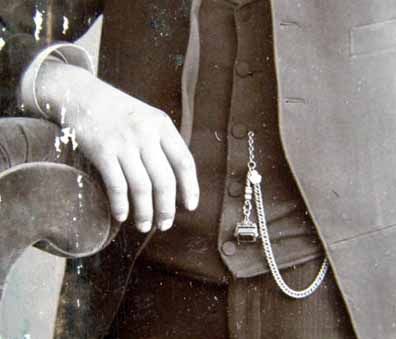

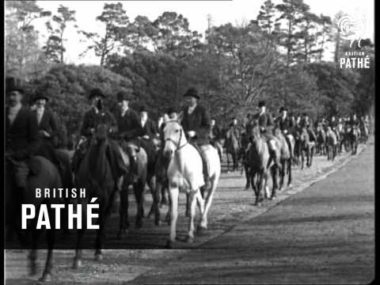

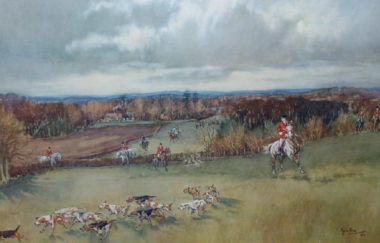

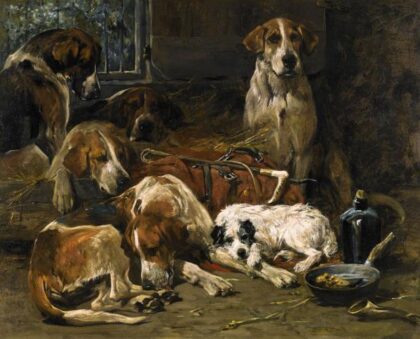
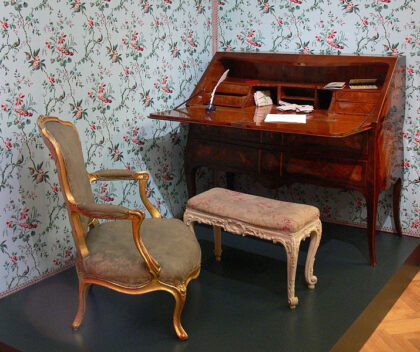
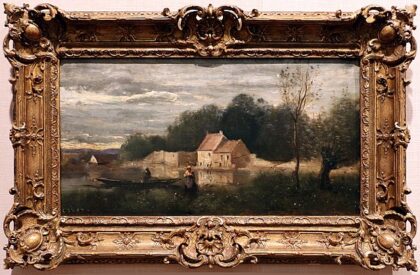
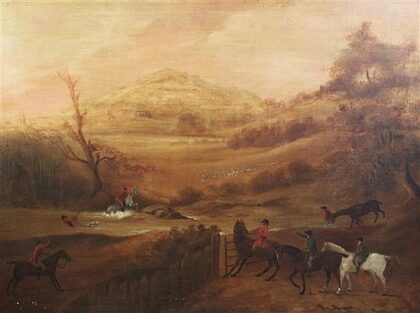 *note – Billesdon and Billesden have both been used to name the hunt.
*note – Billesdon and Billesden have both been used to name the hunt.